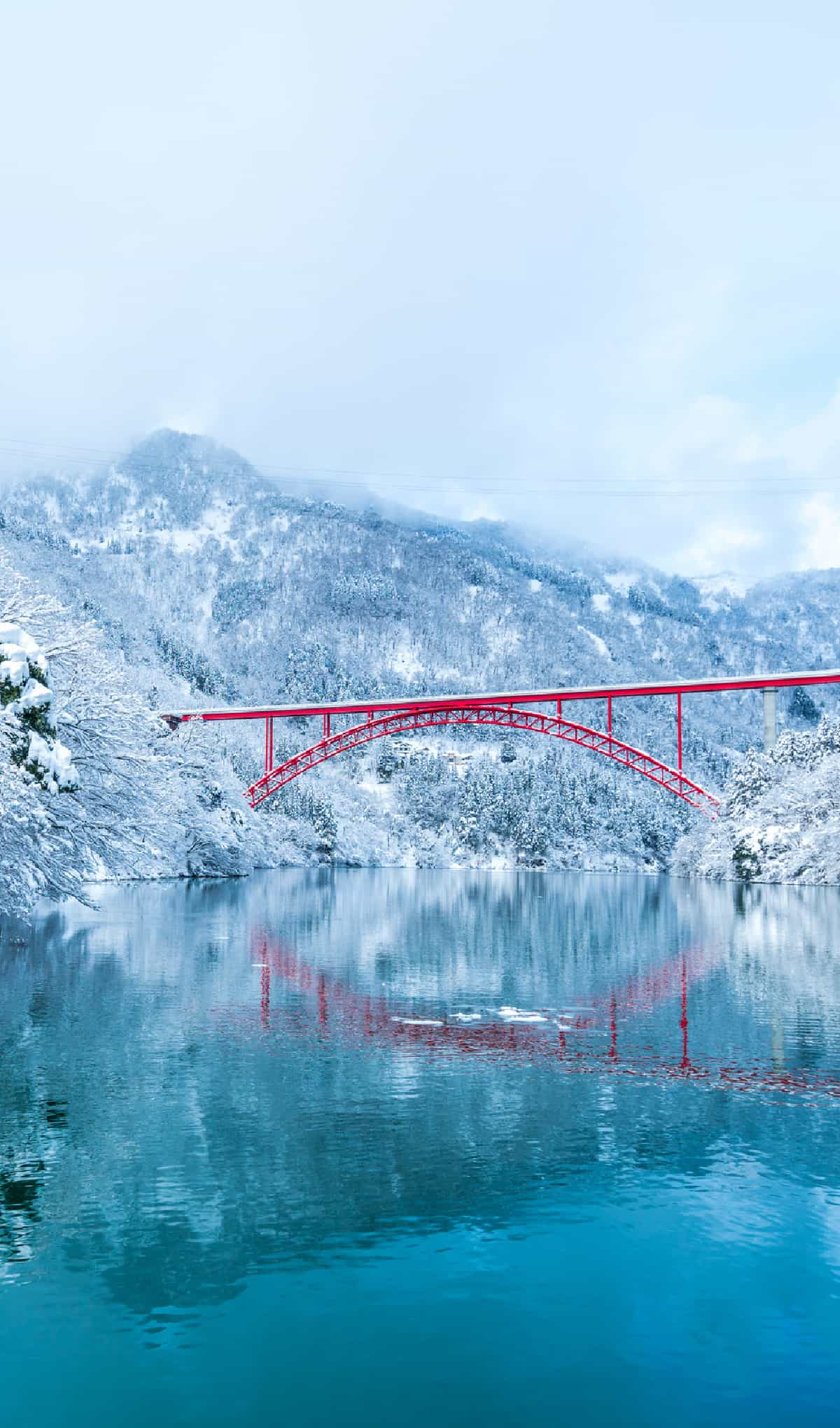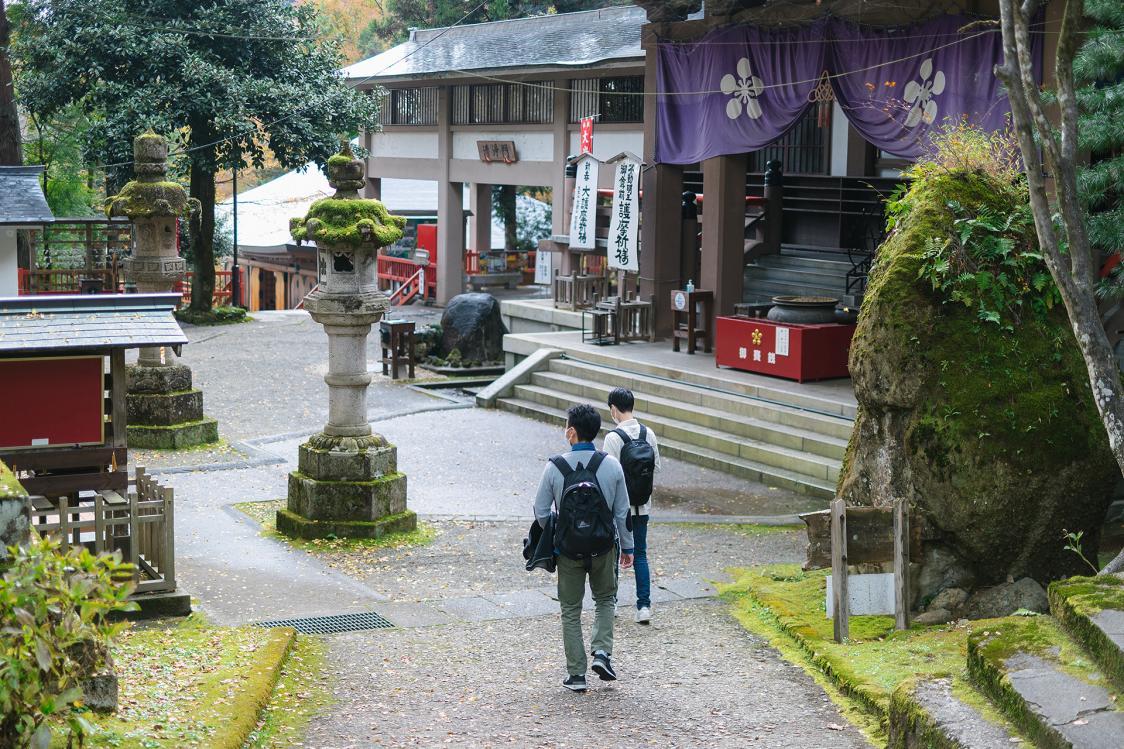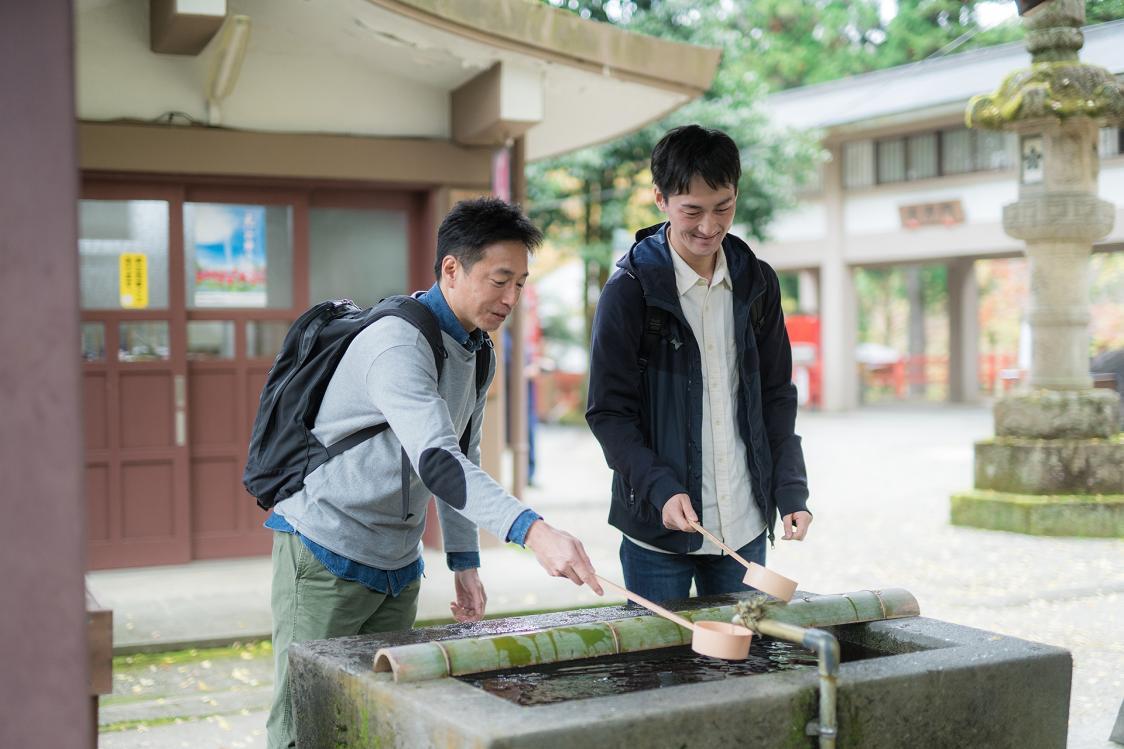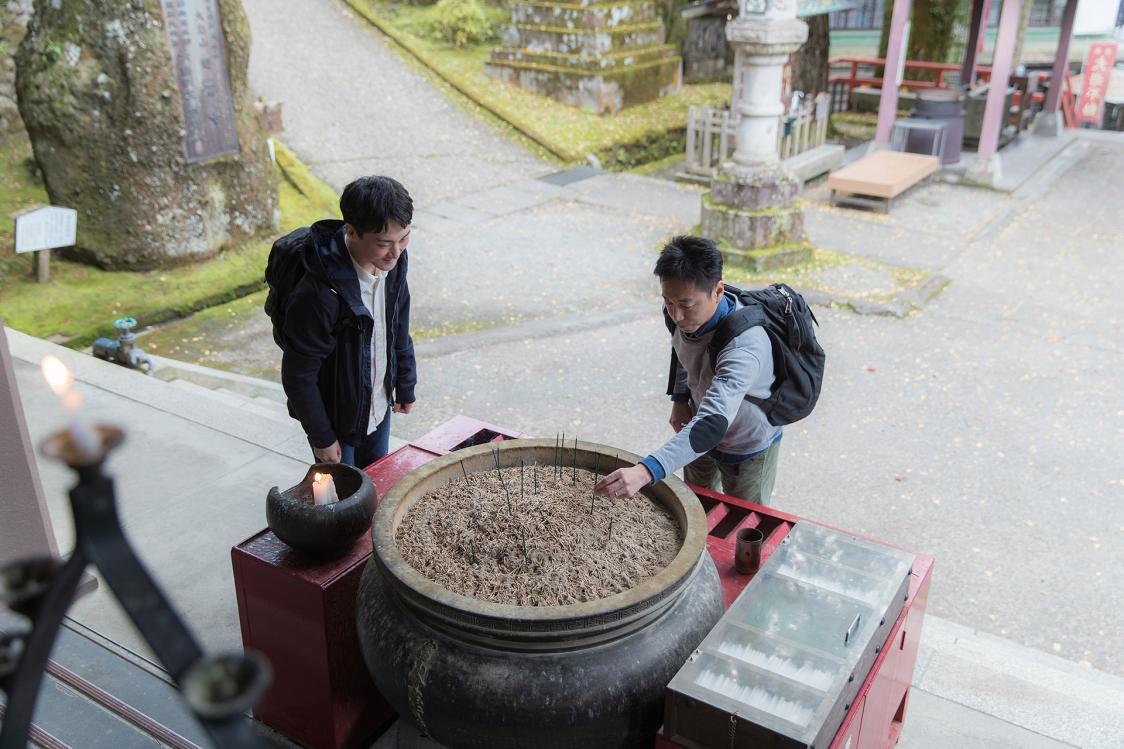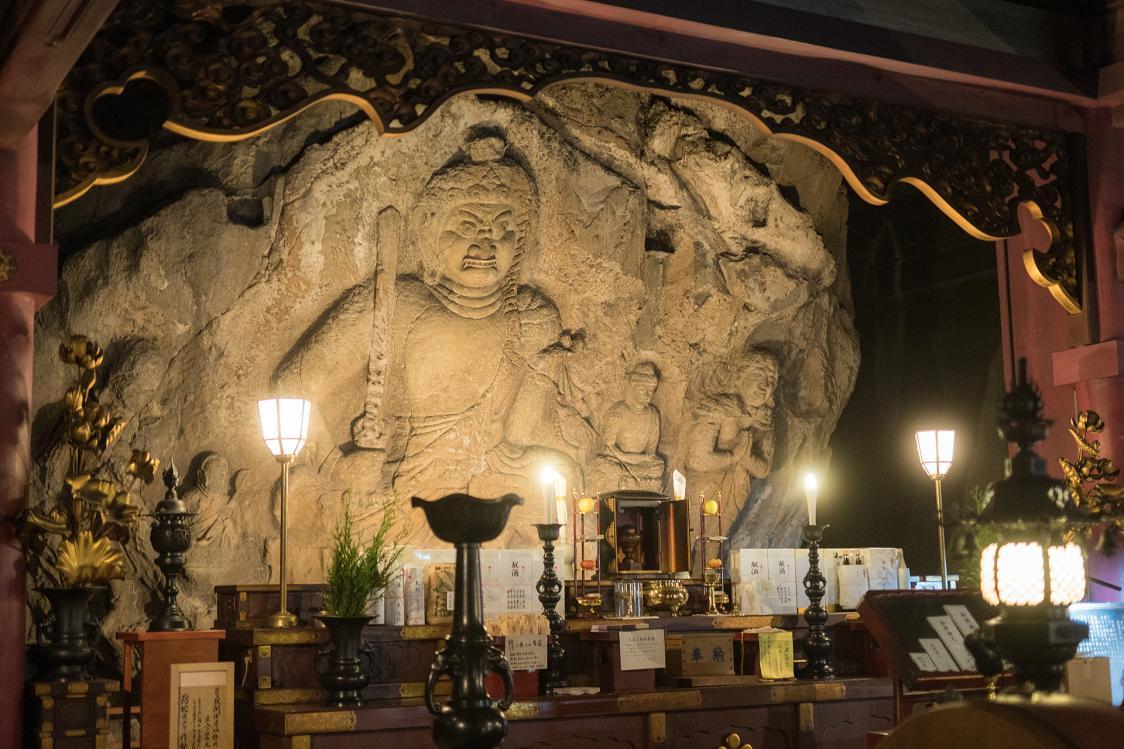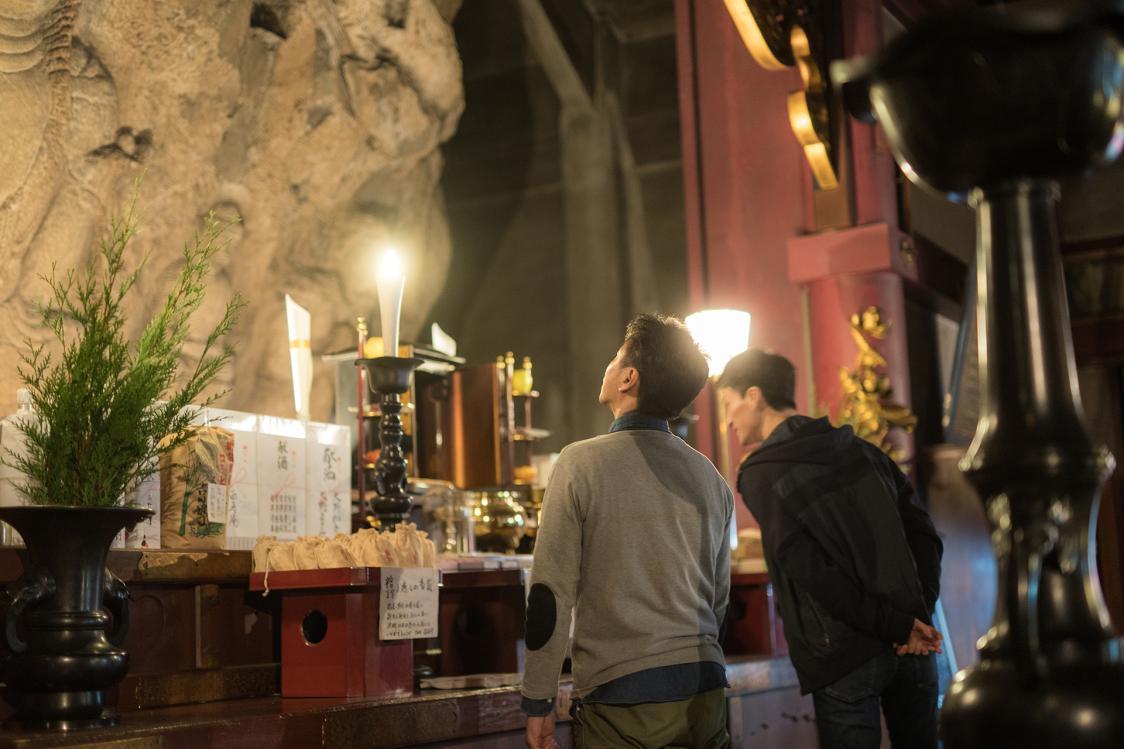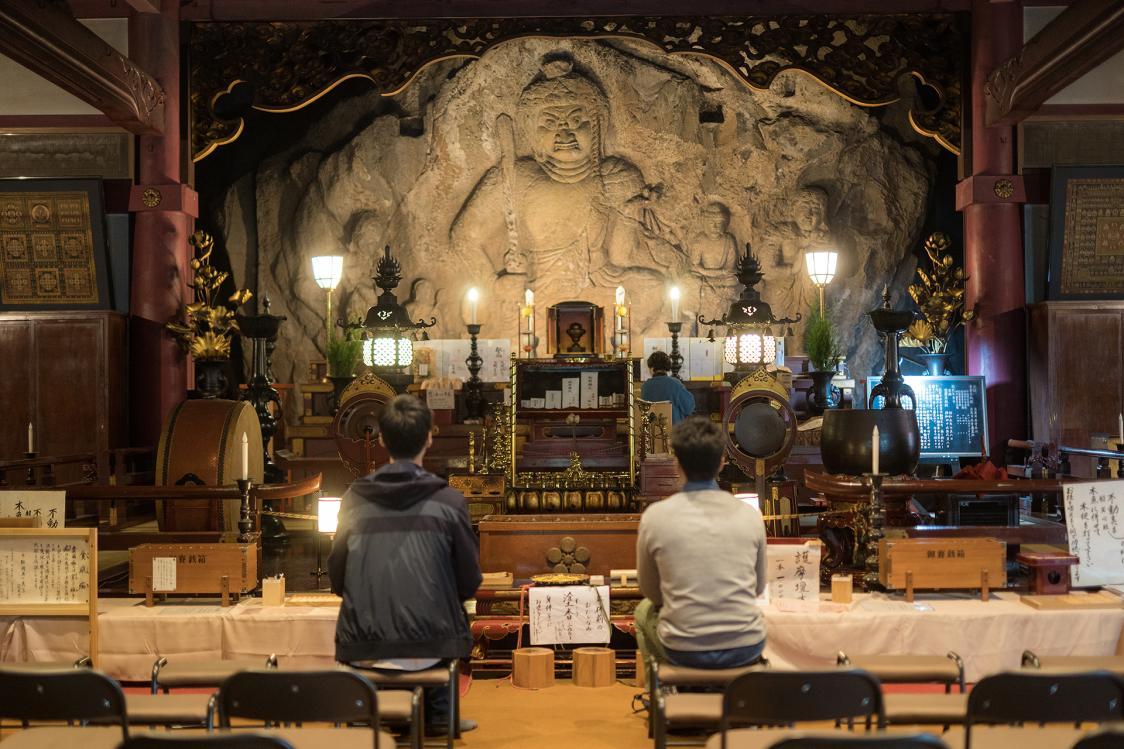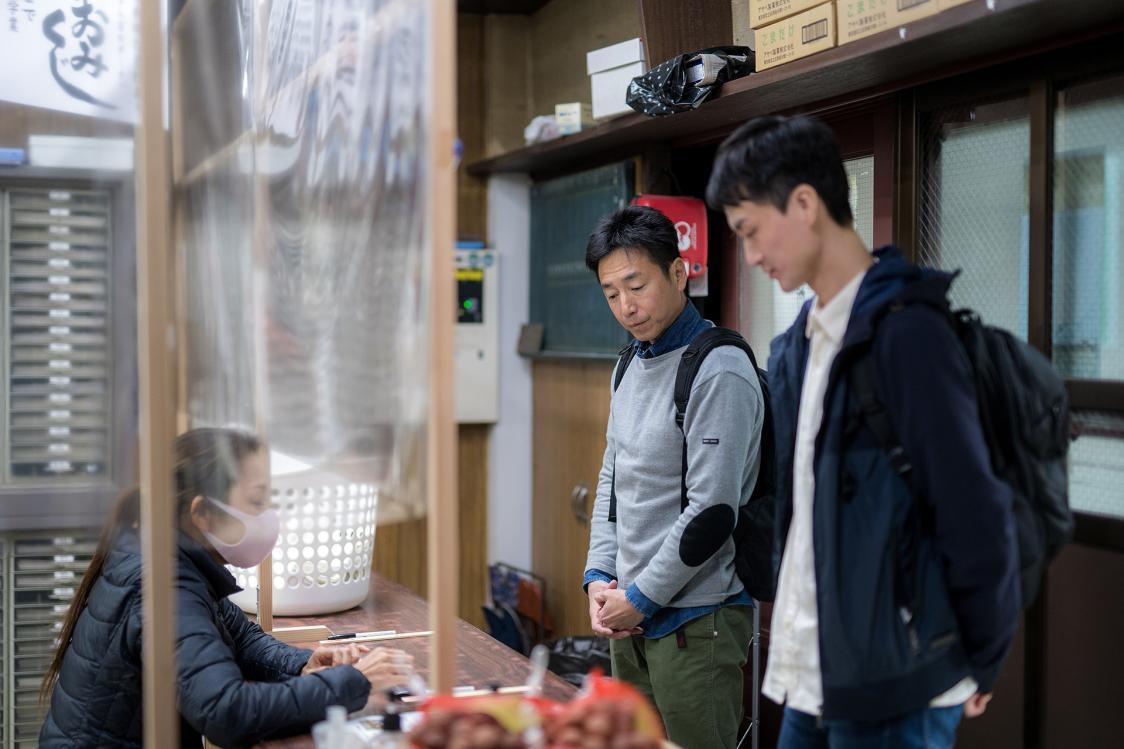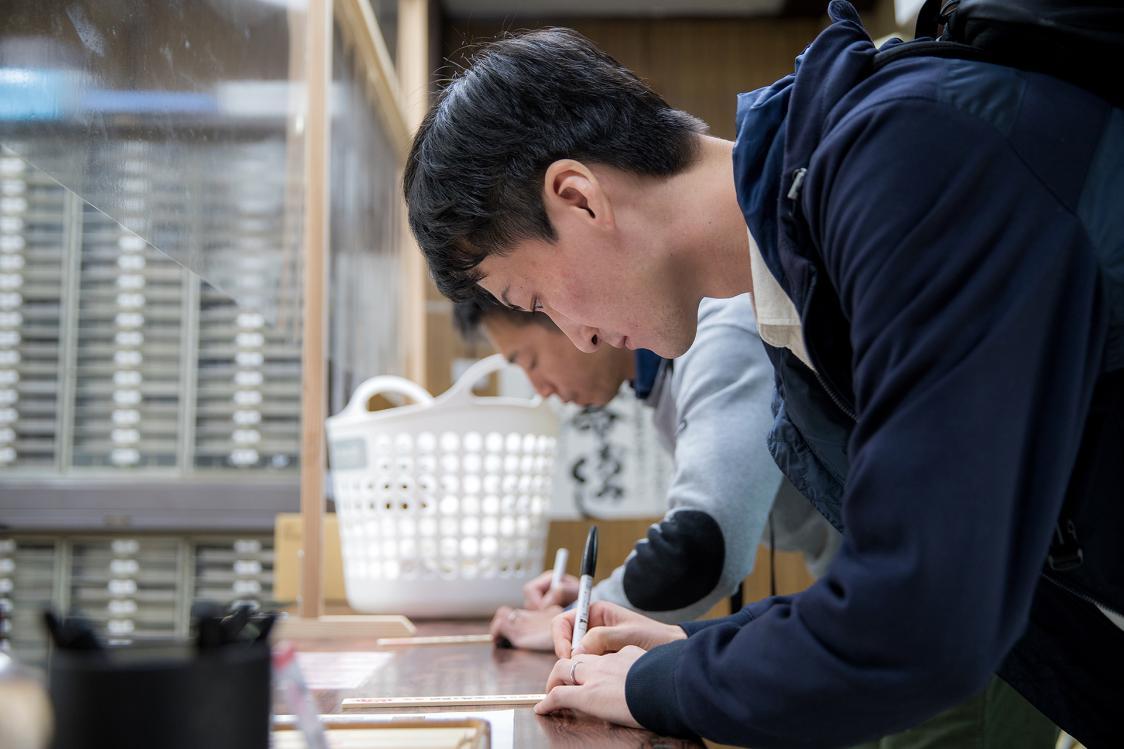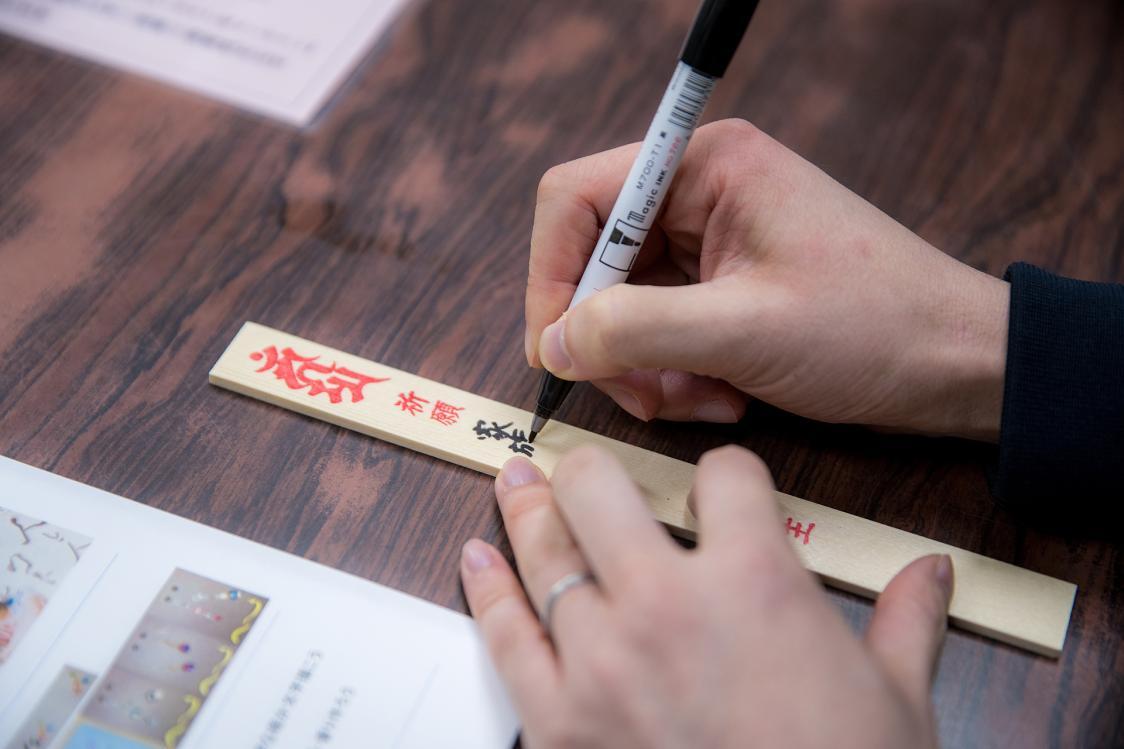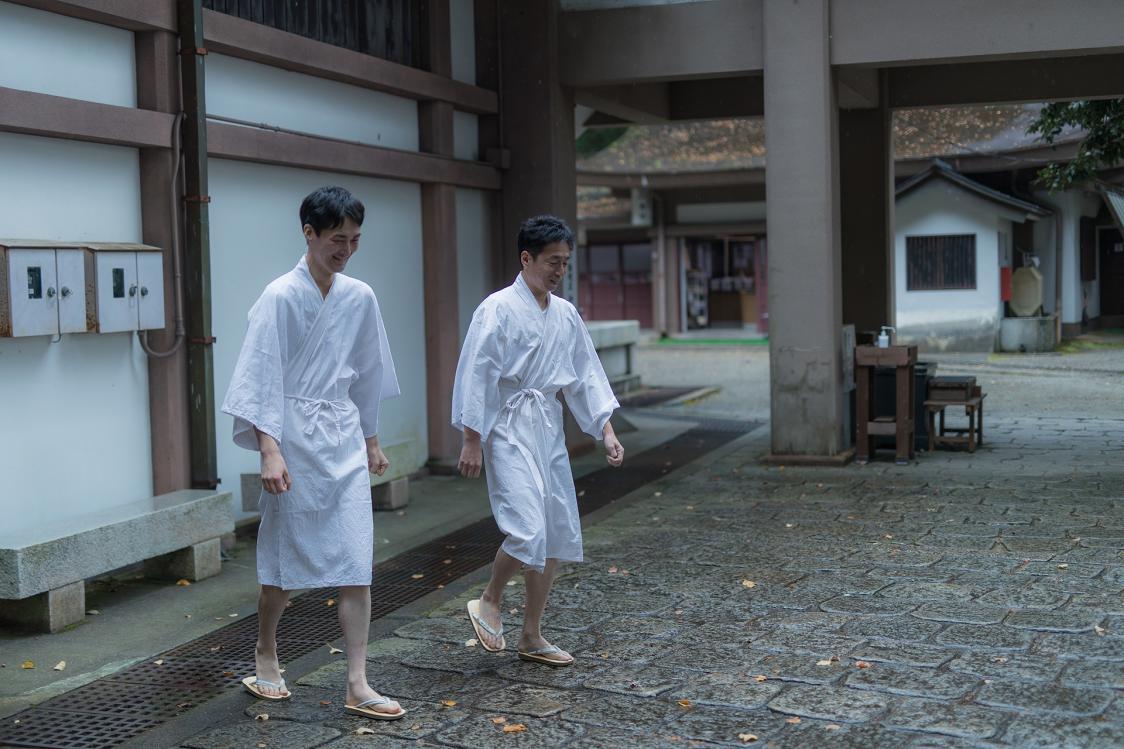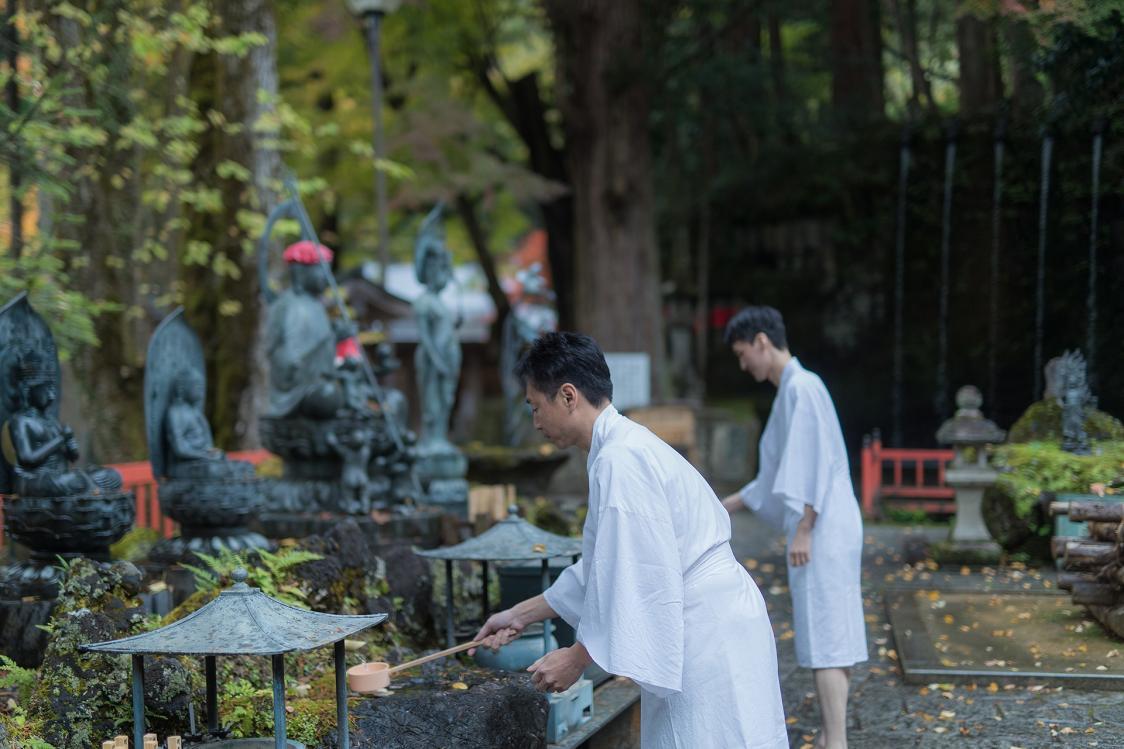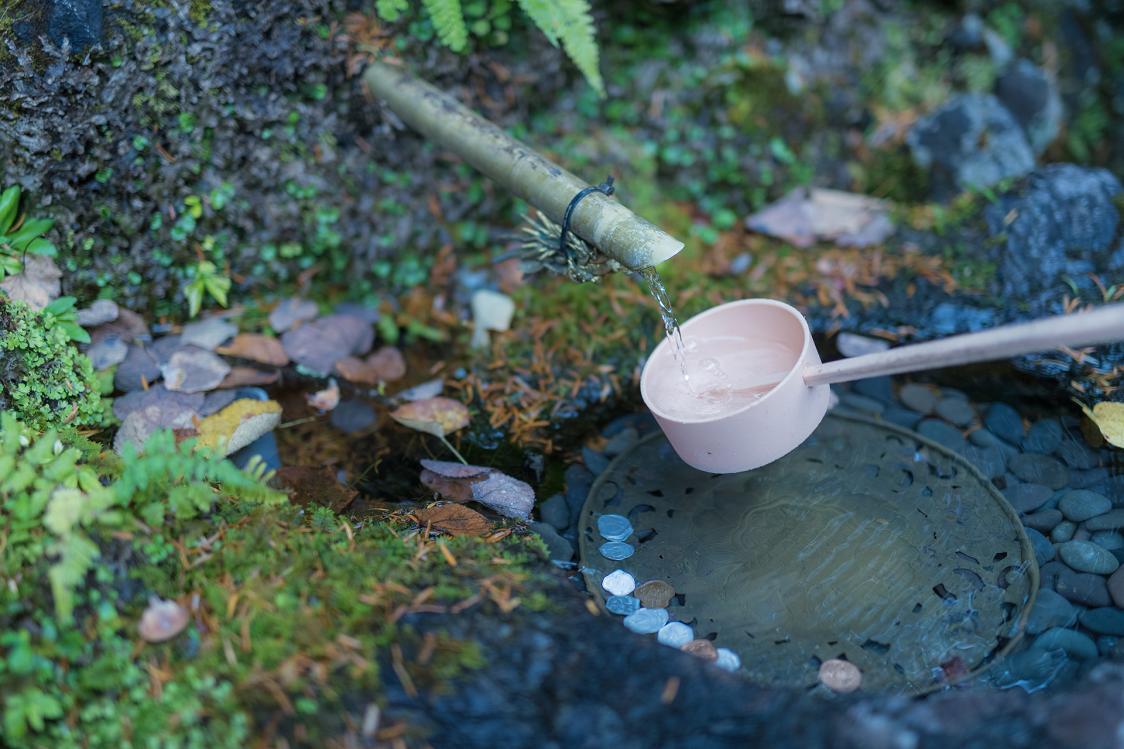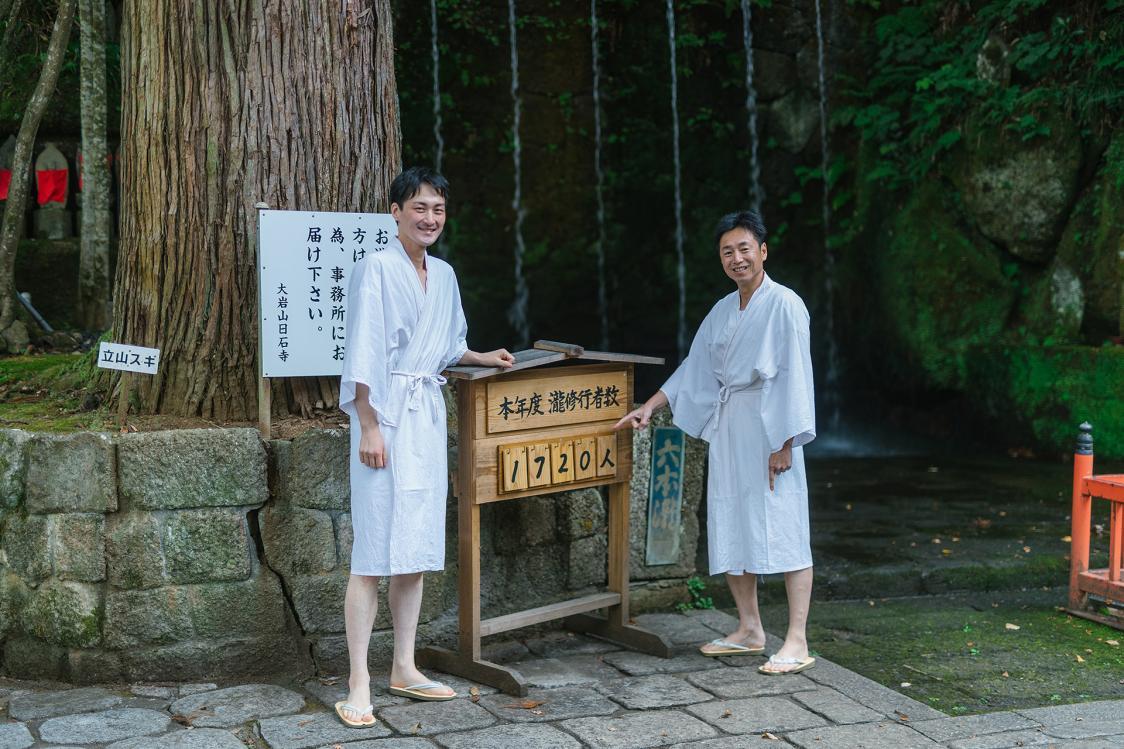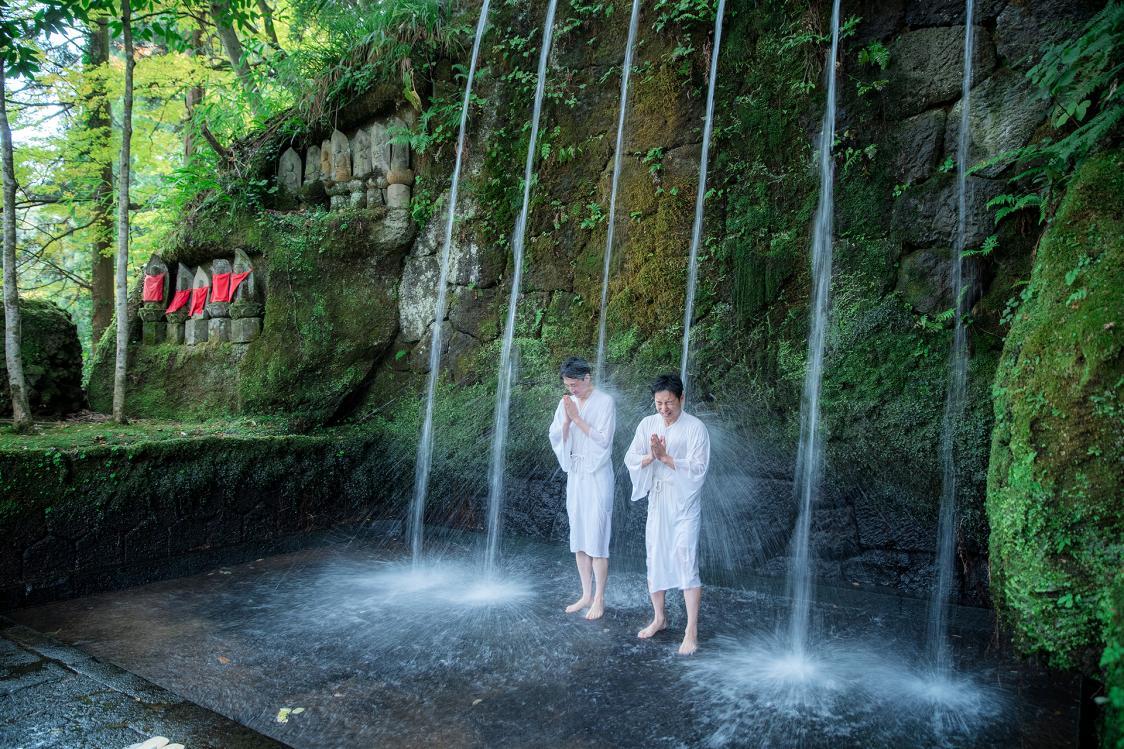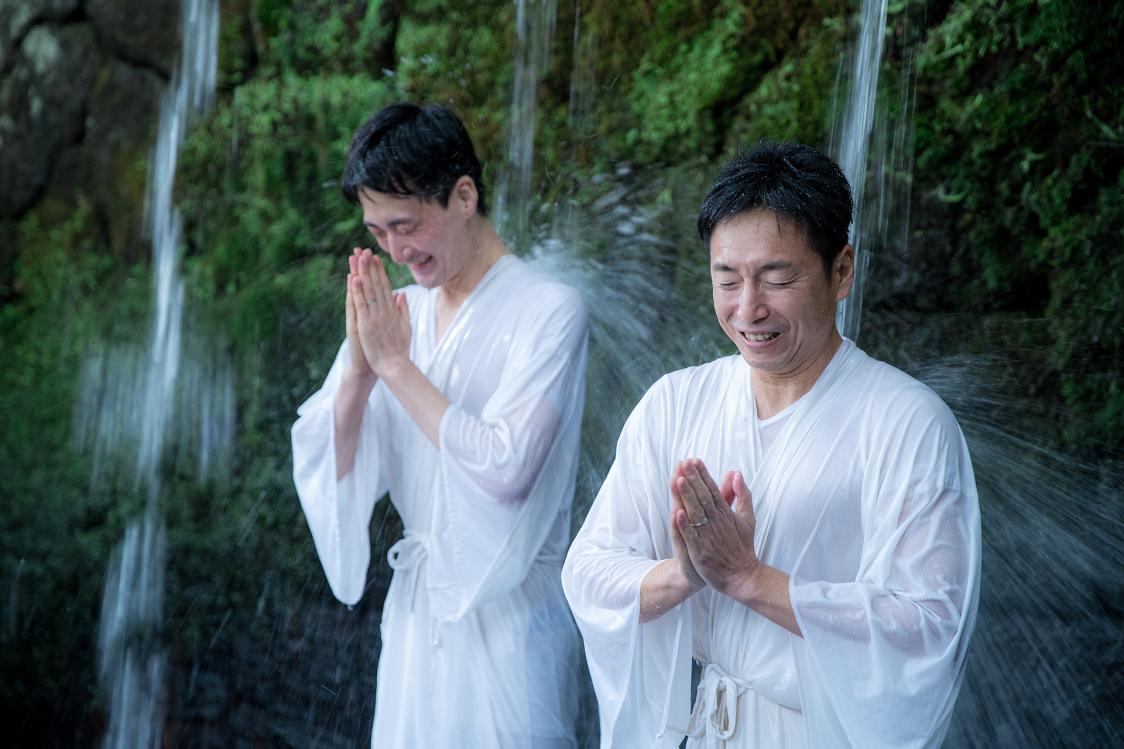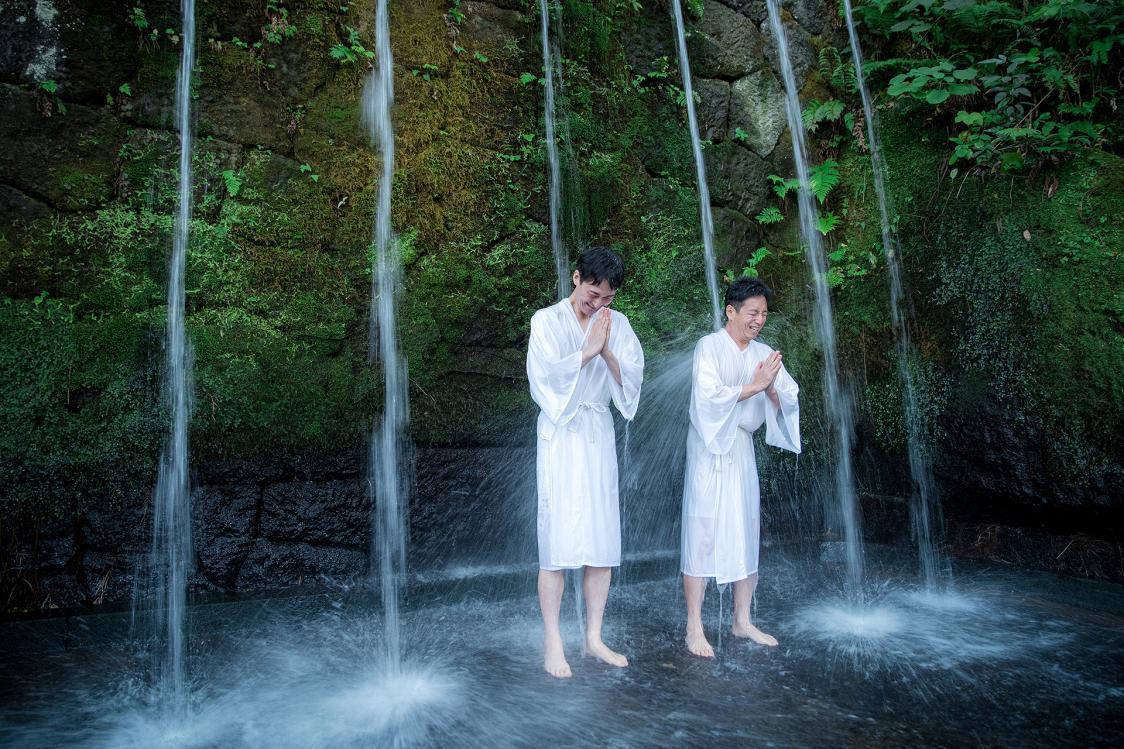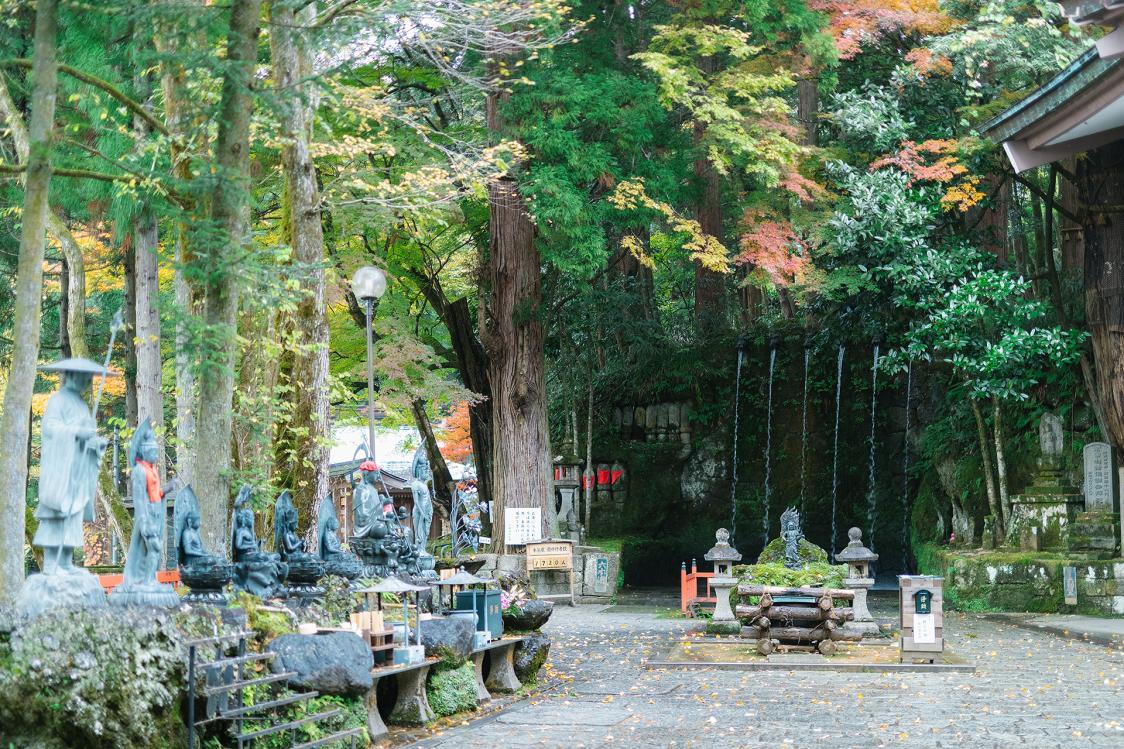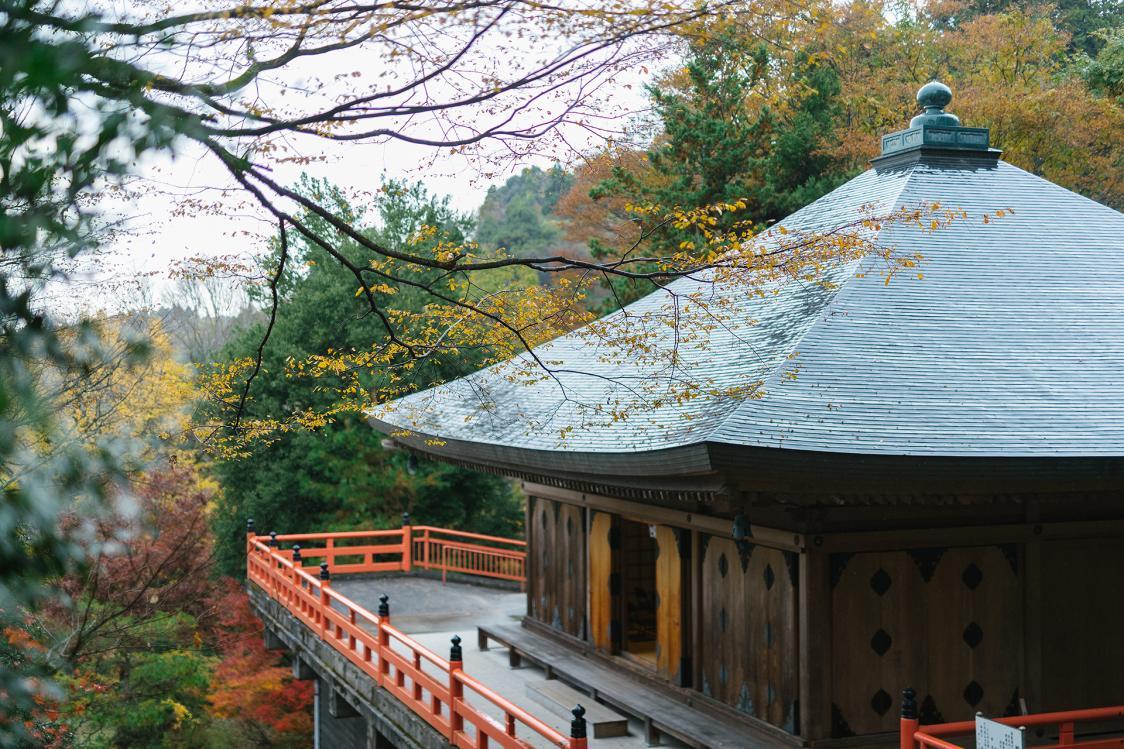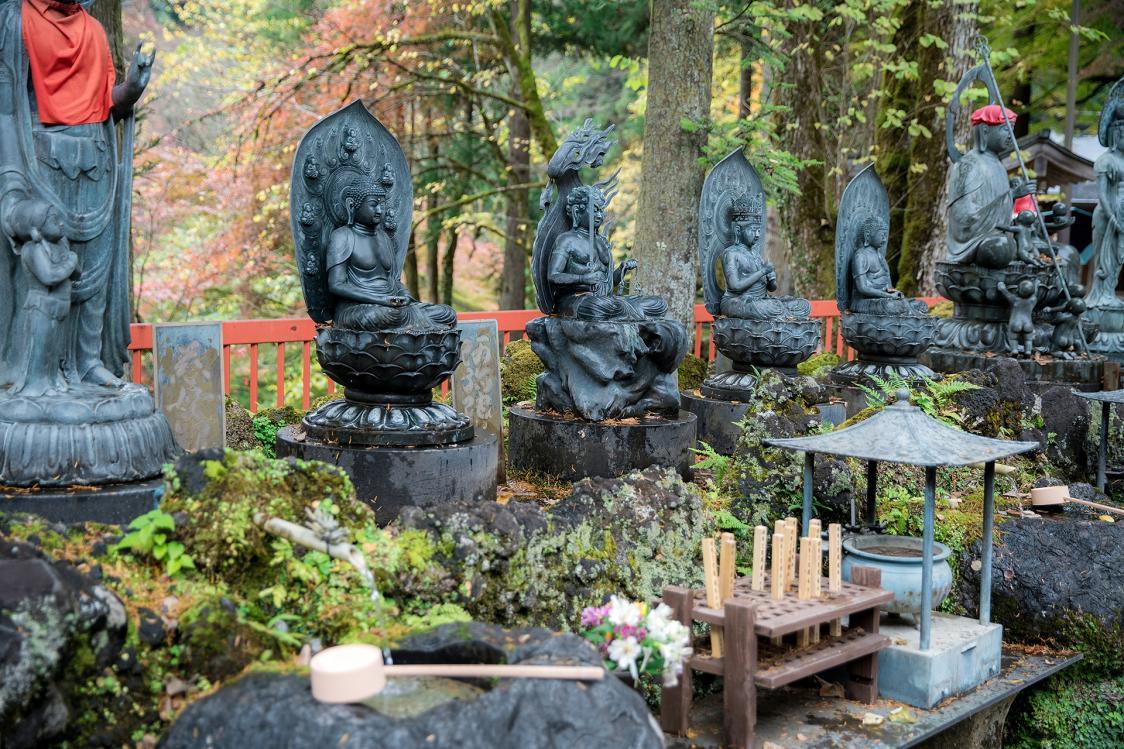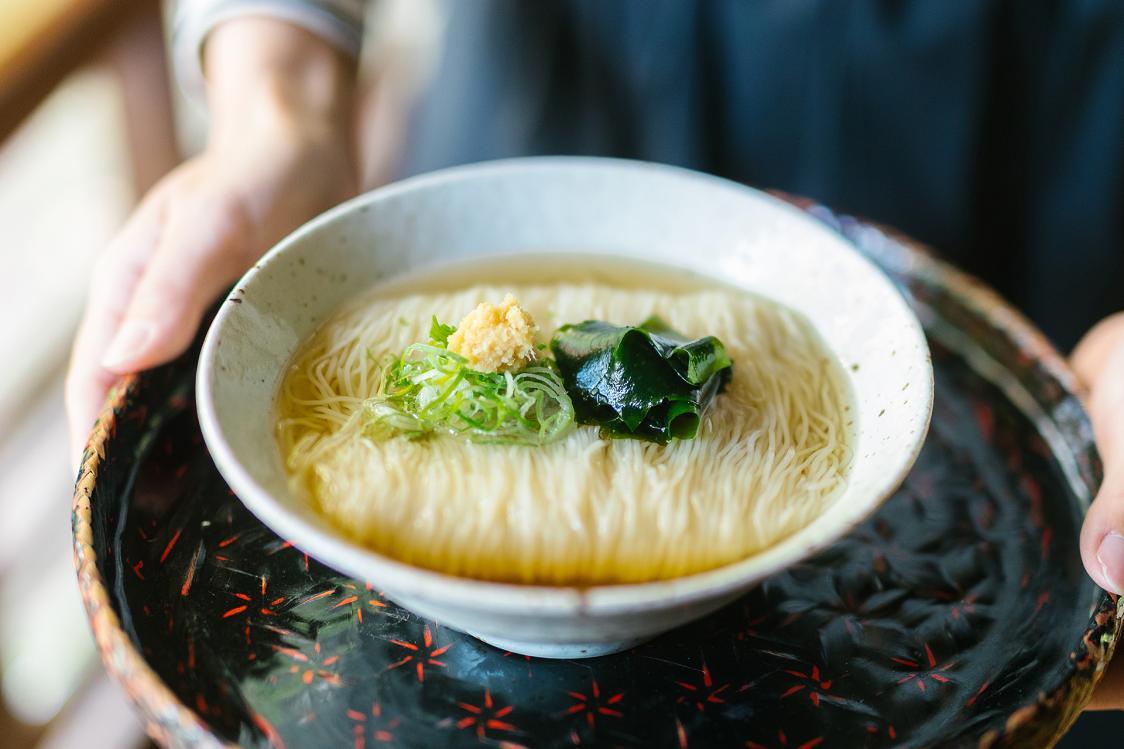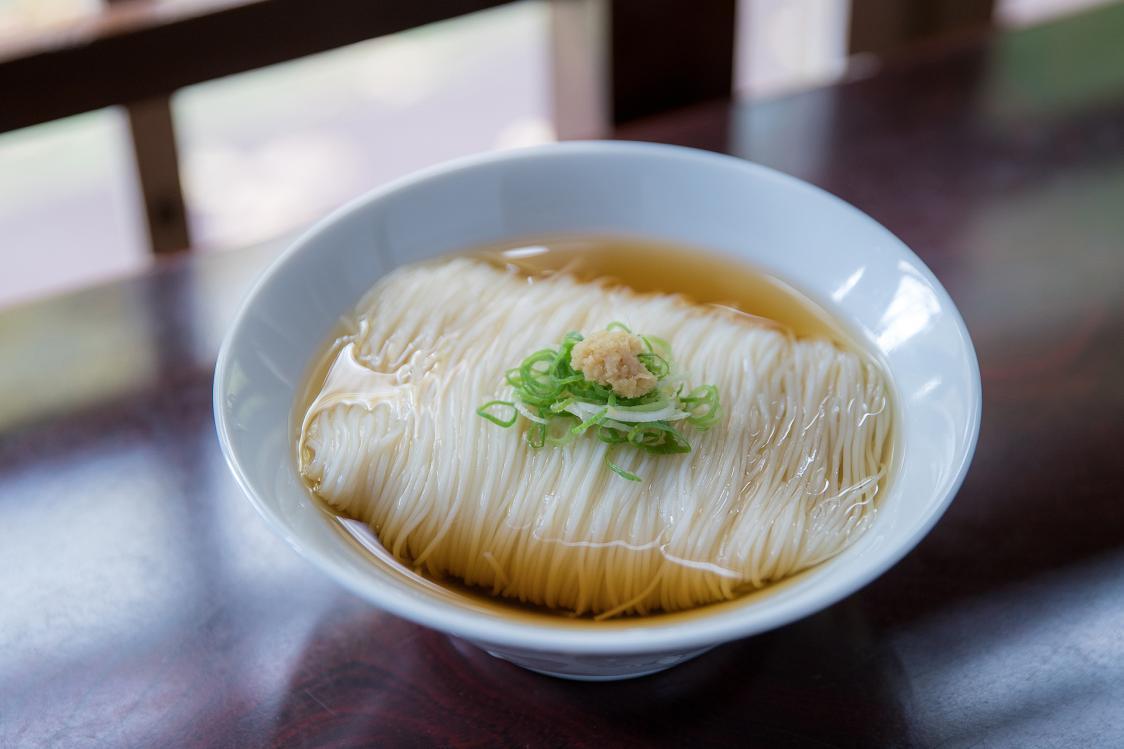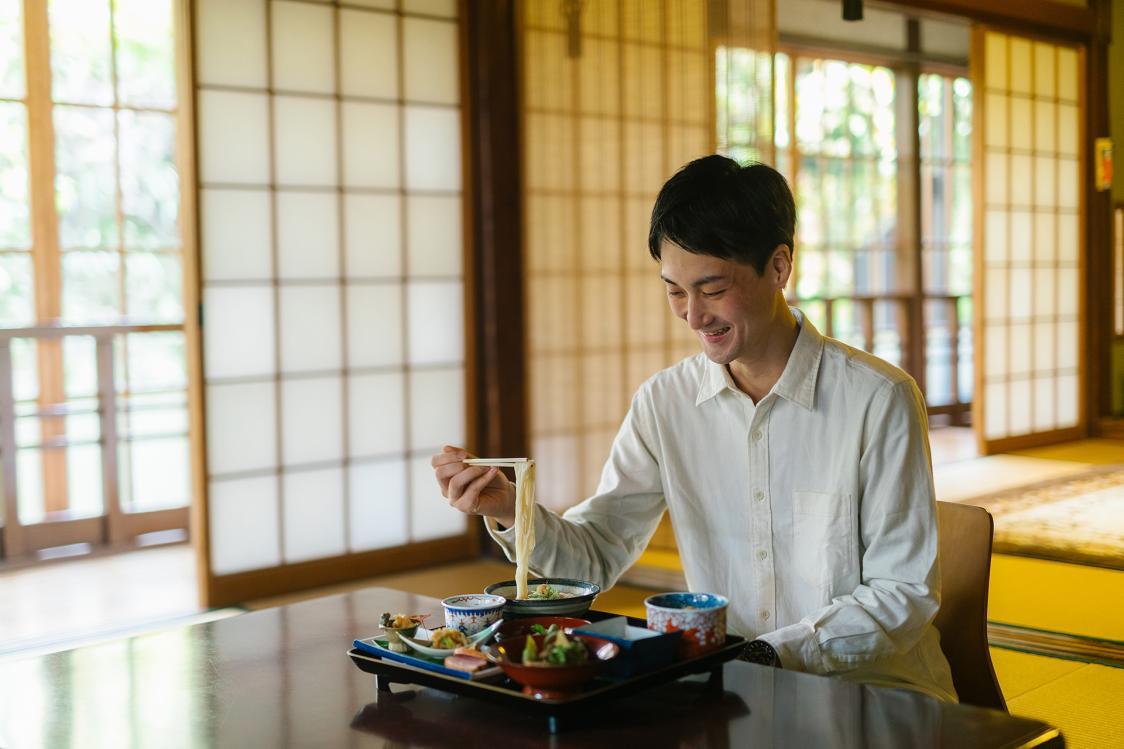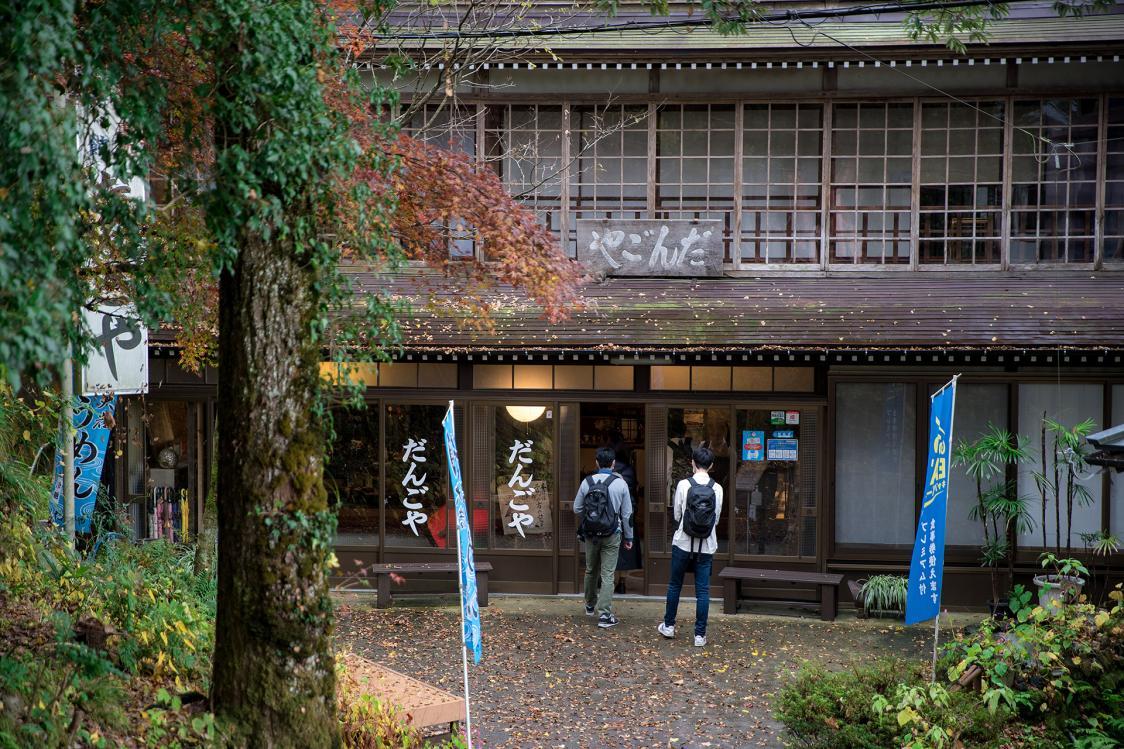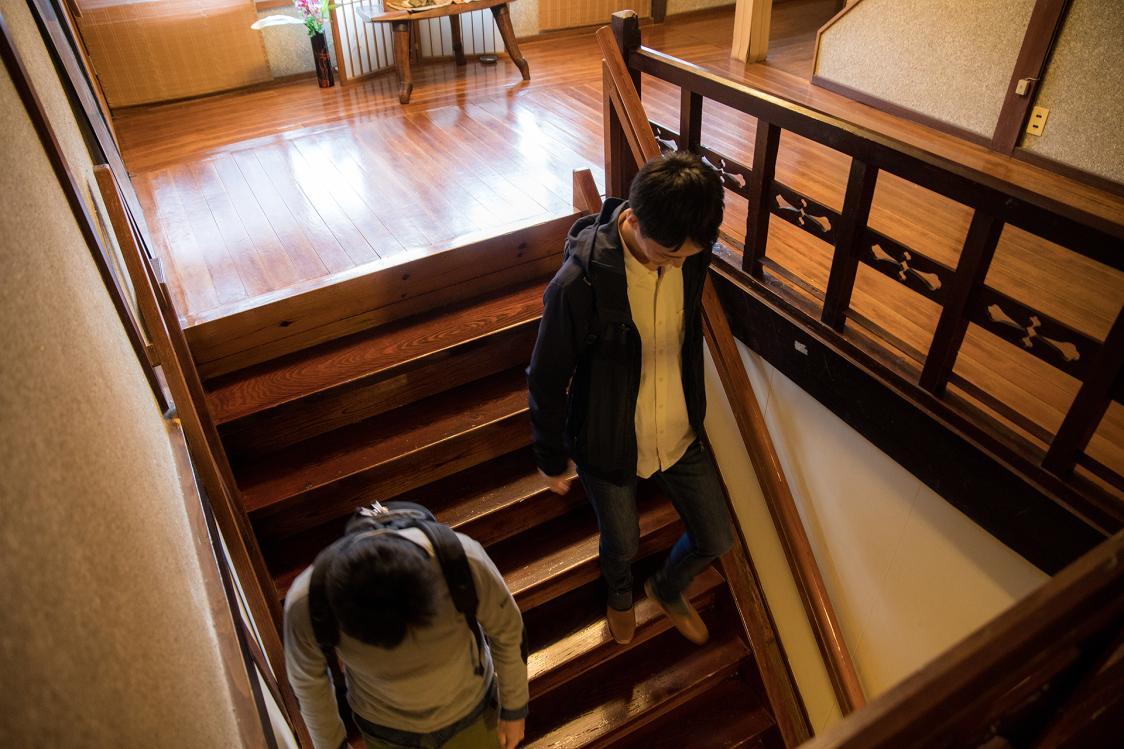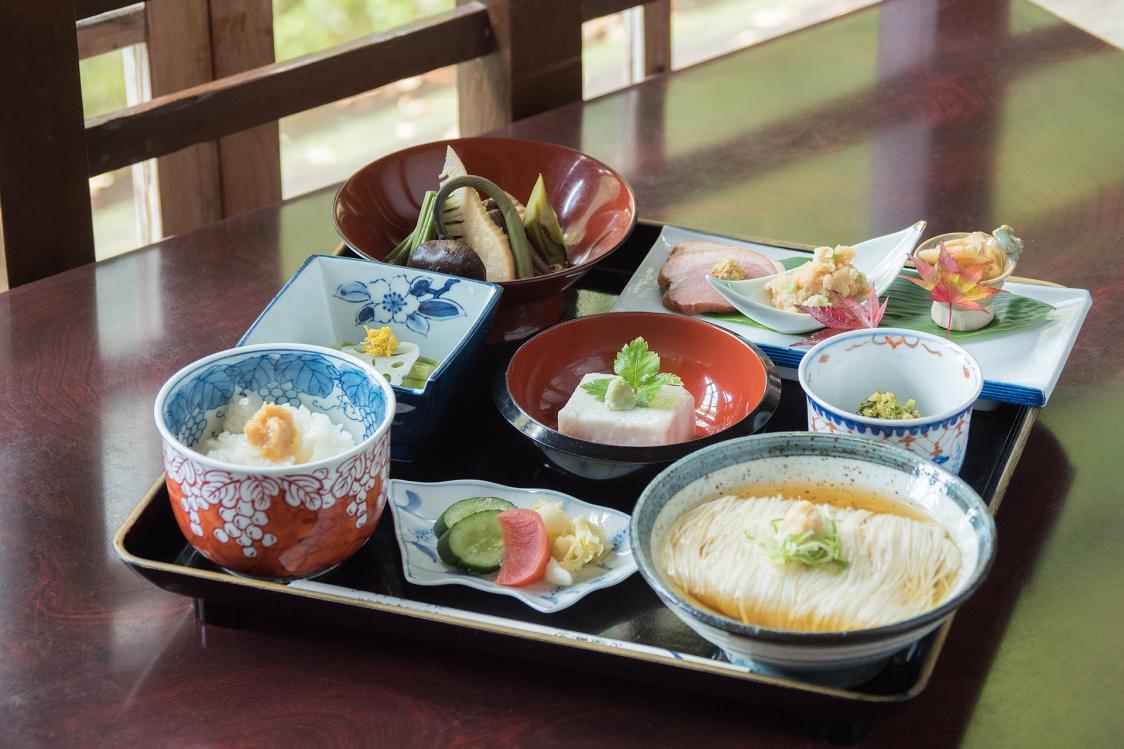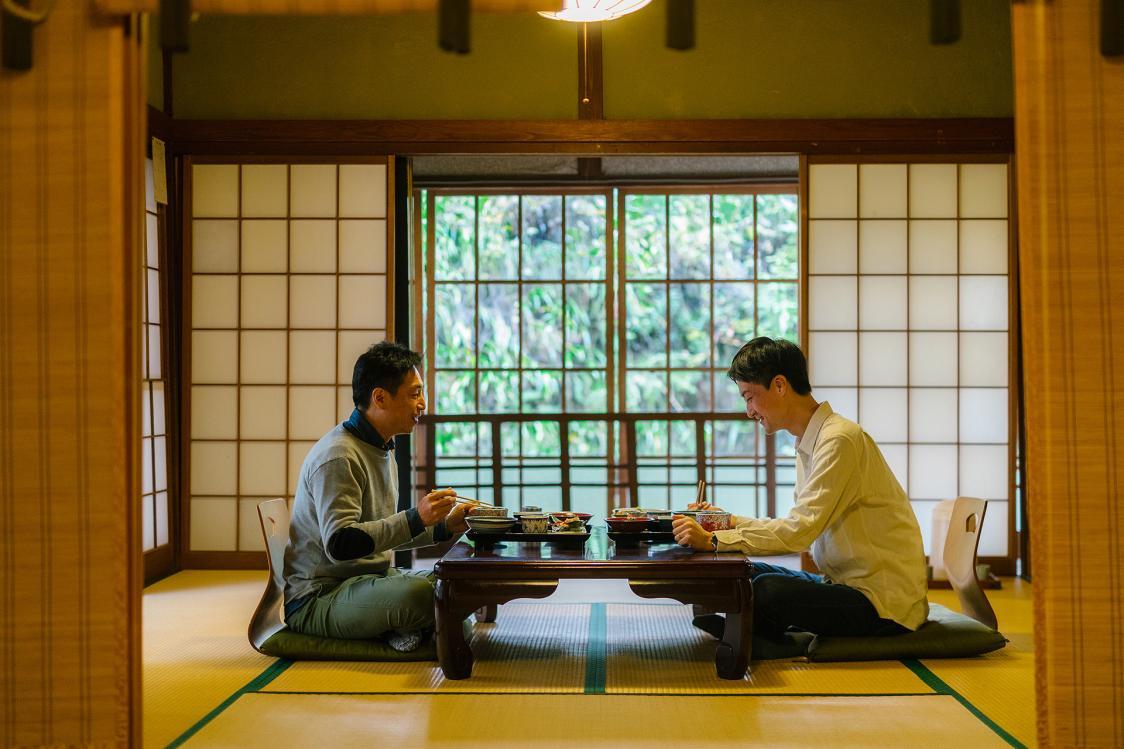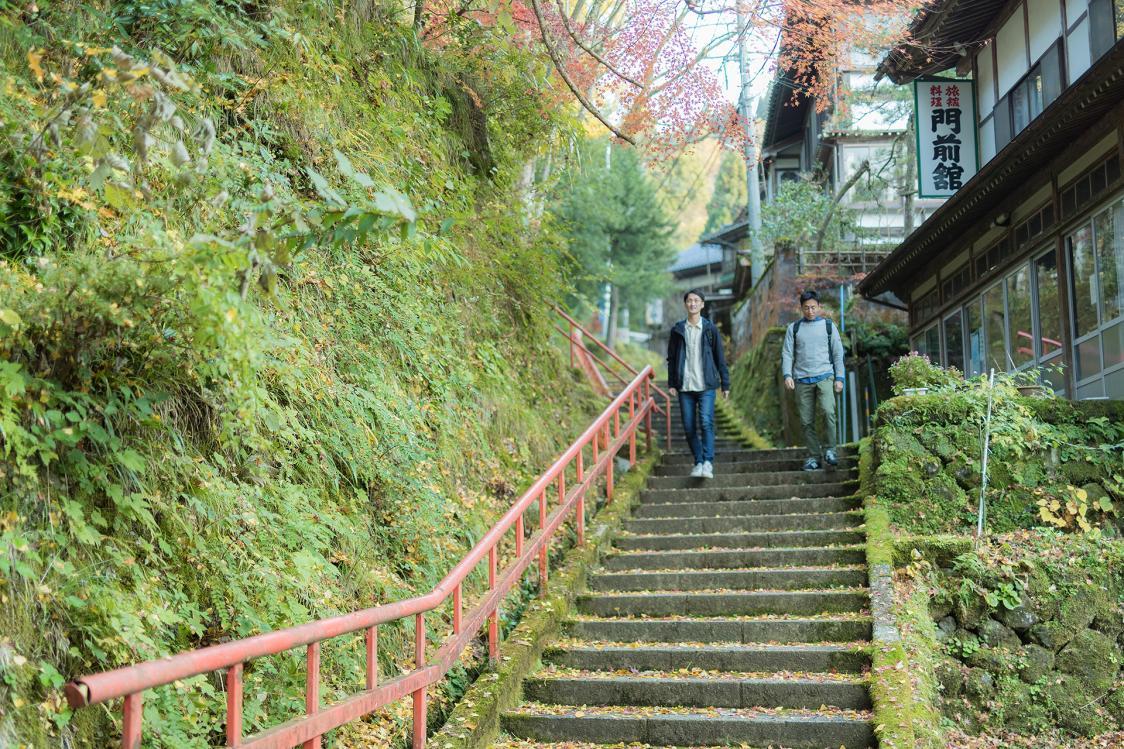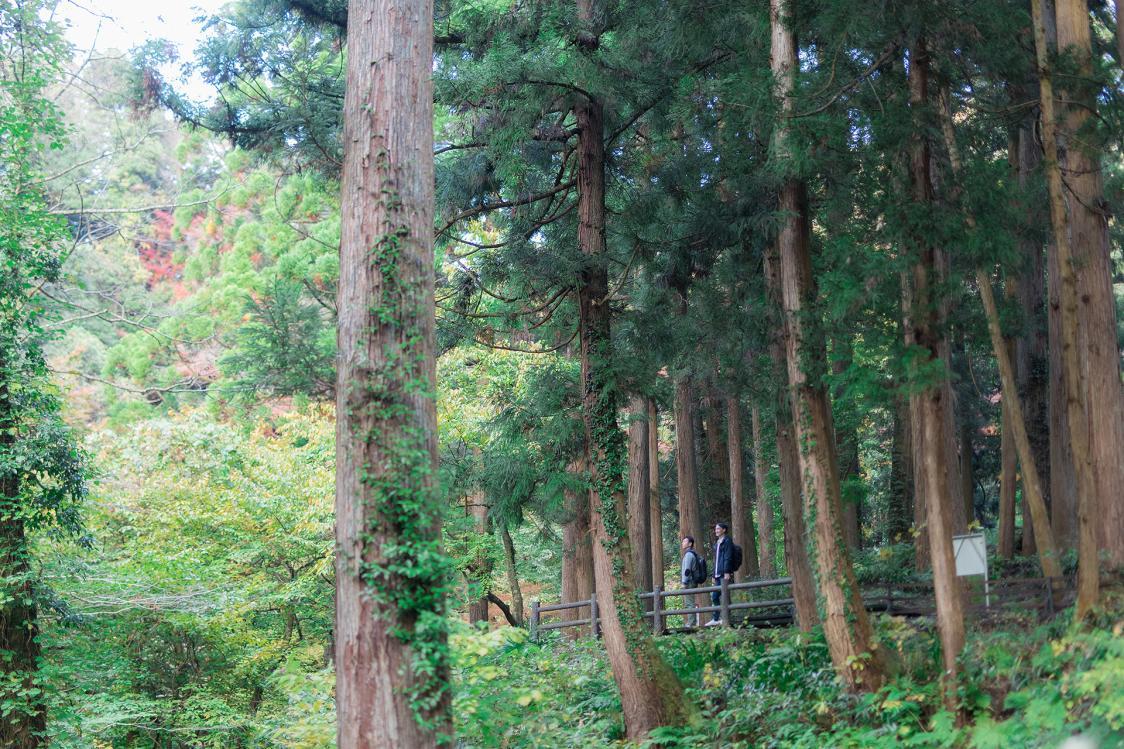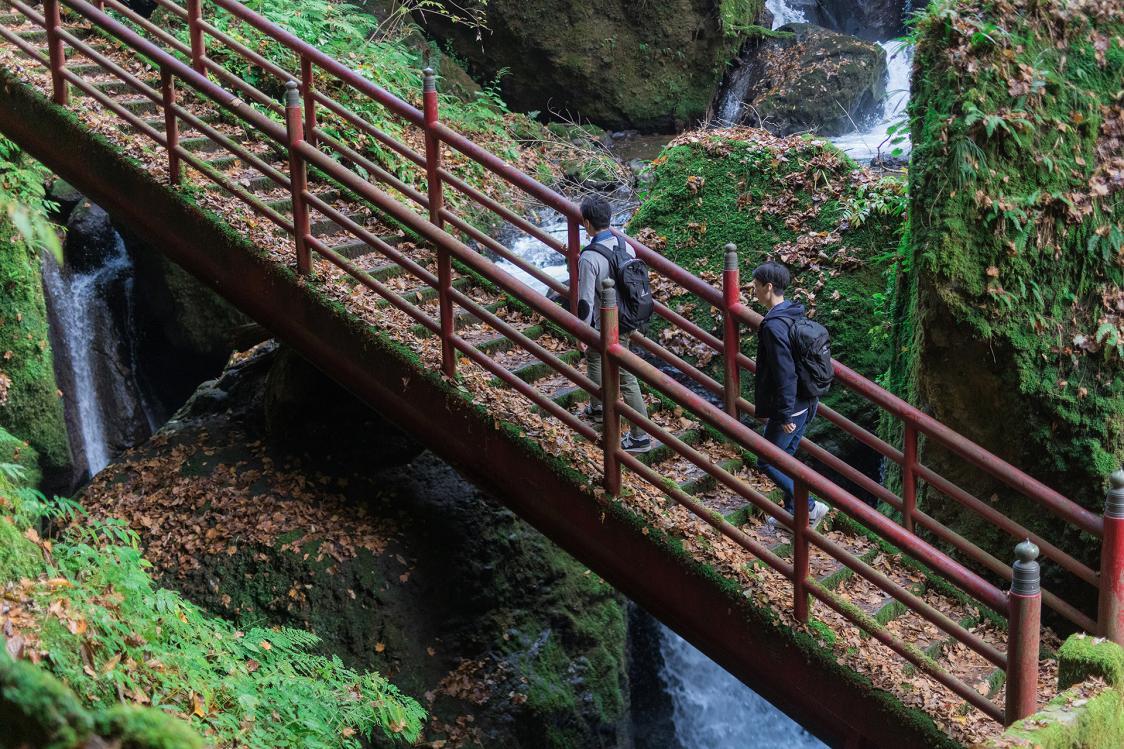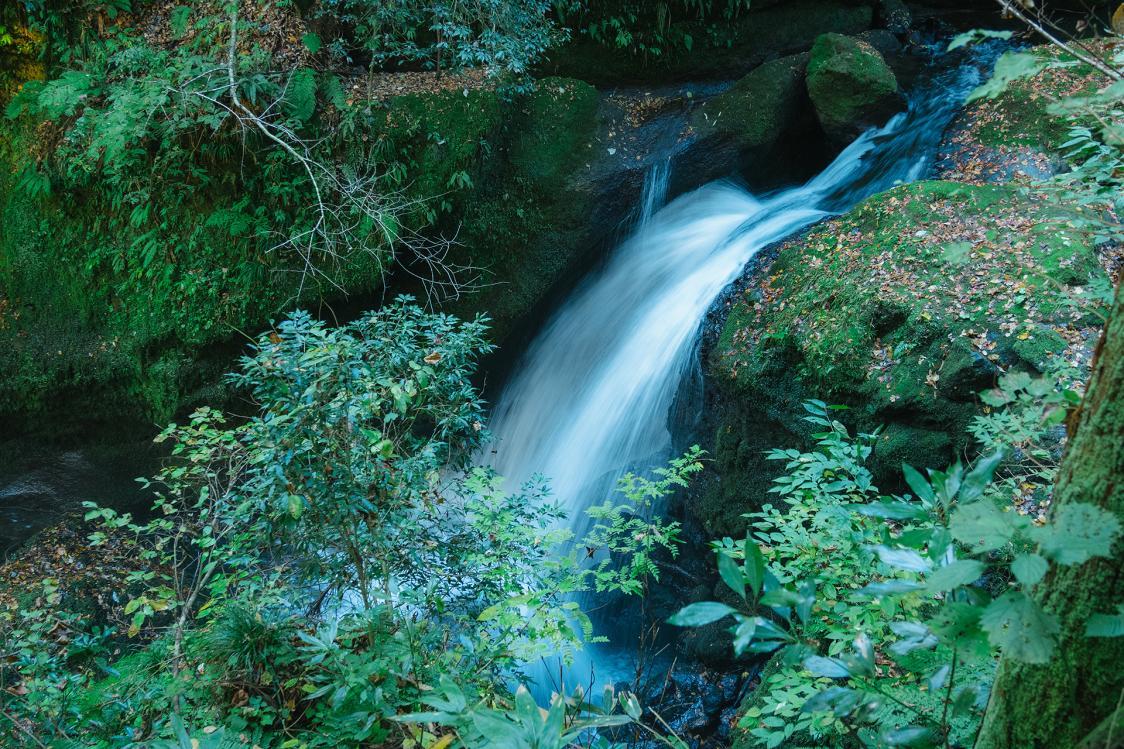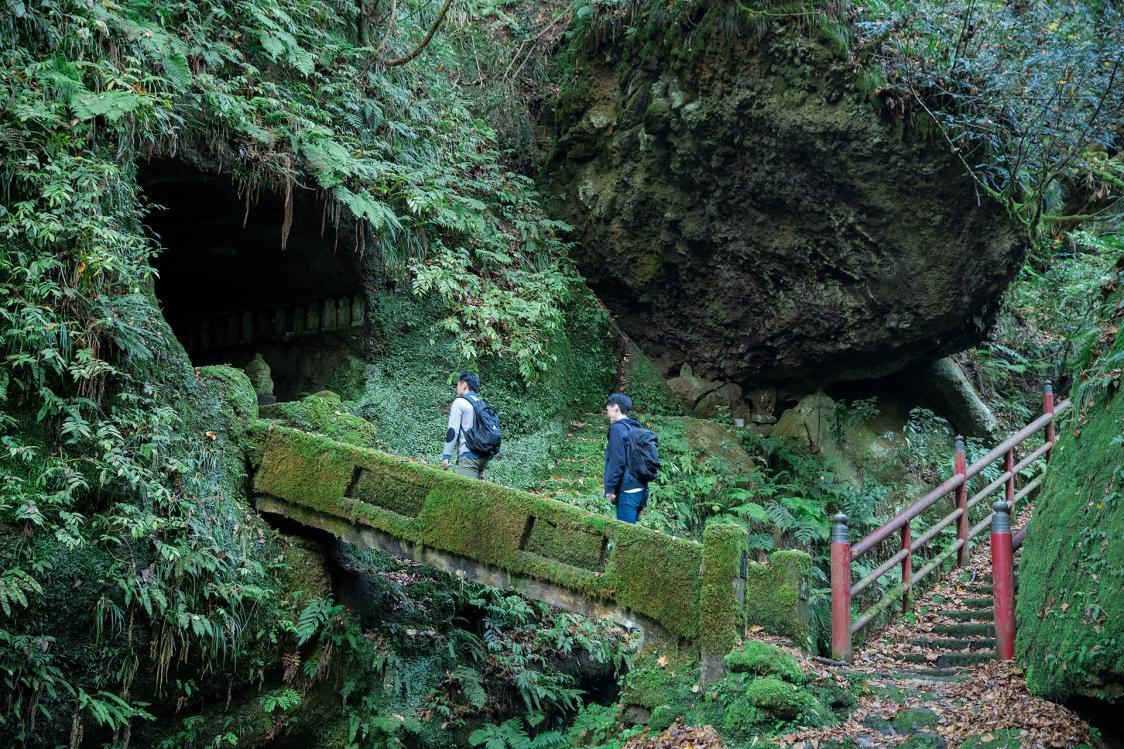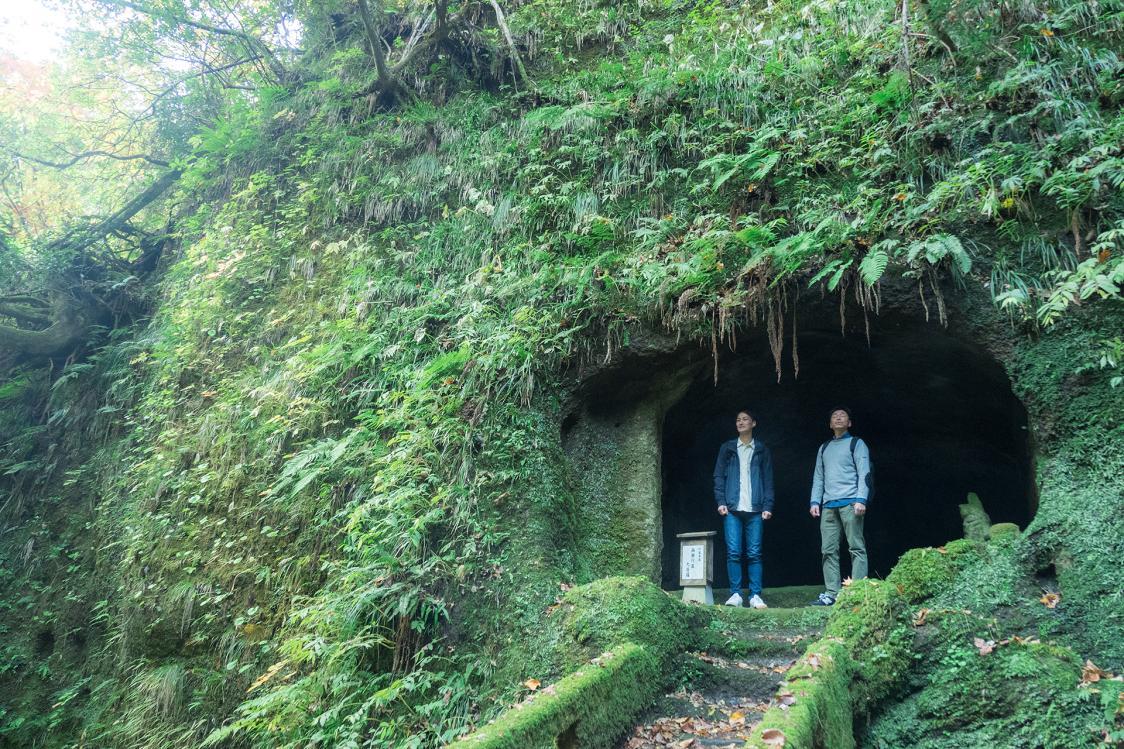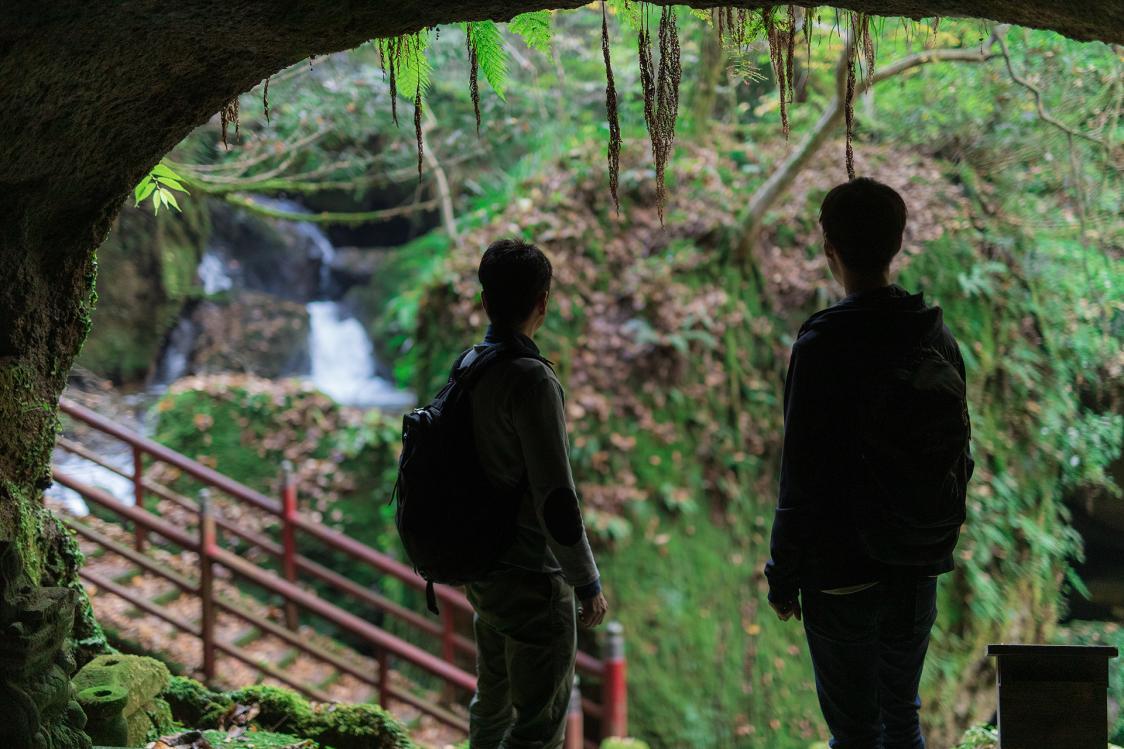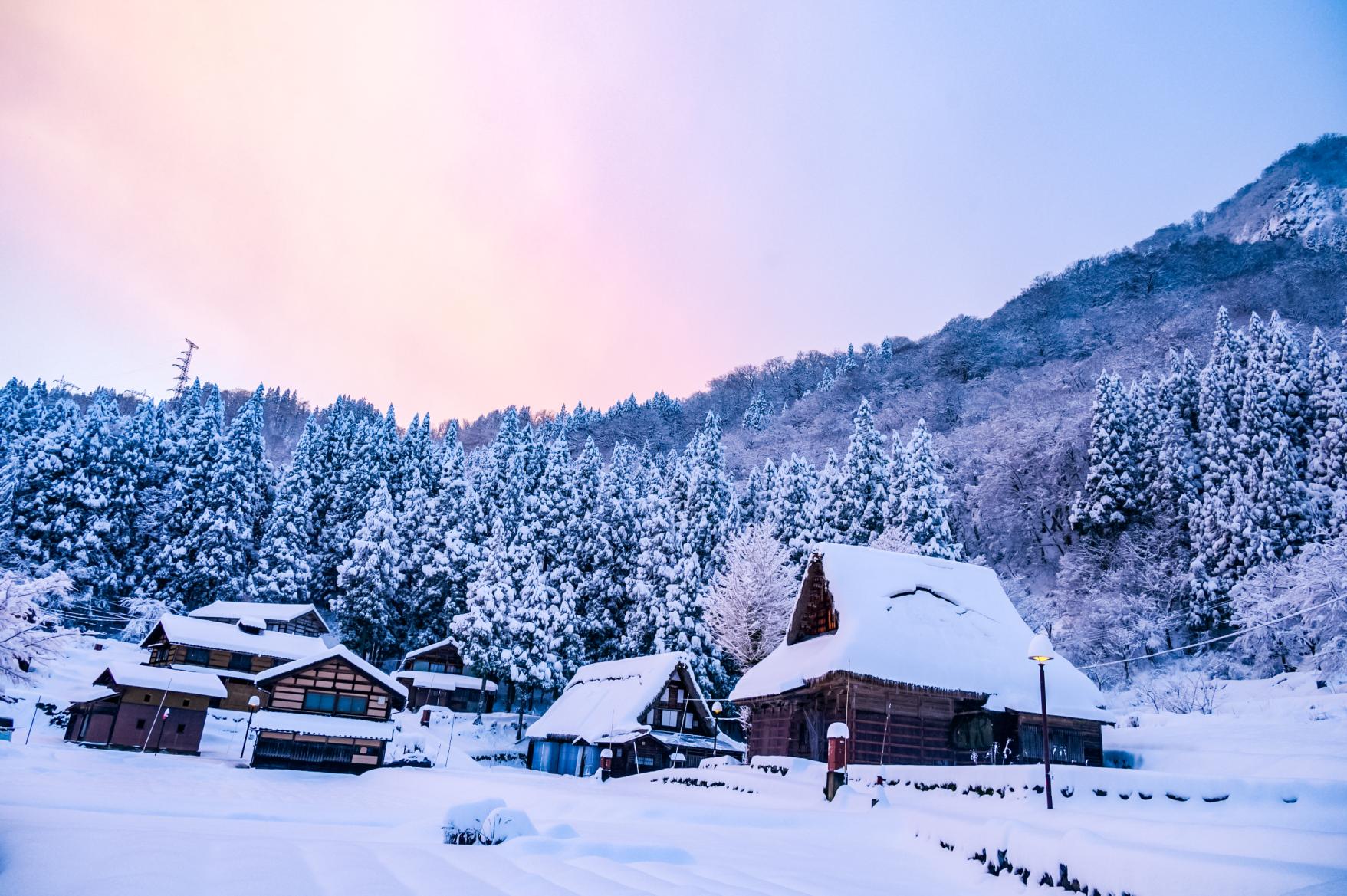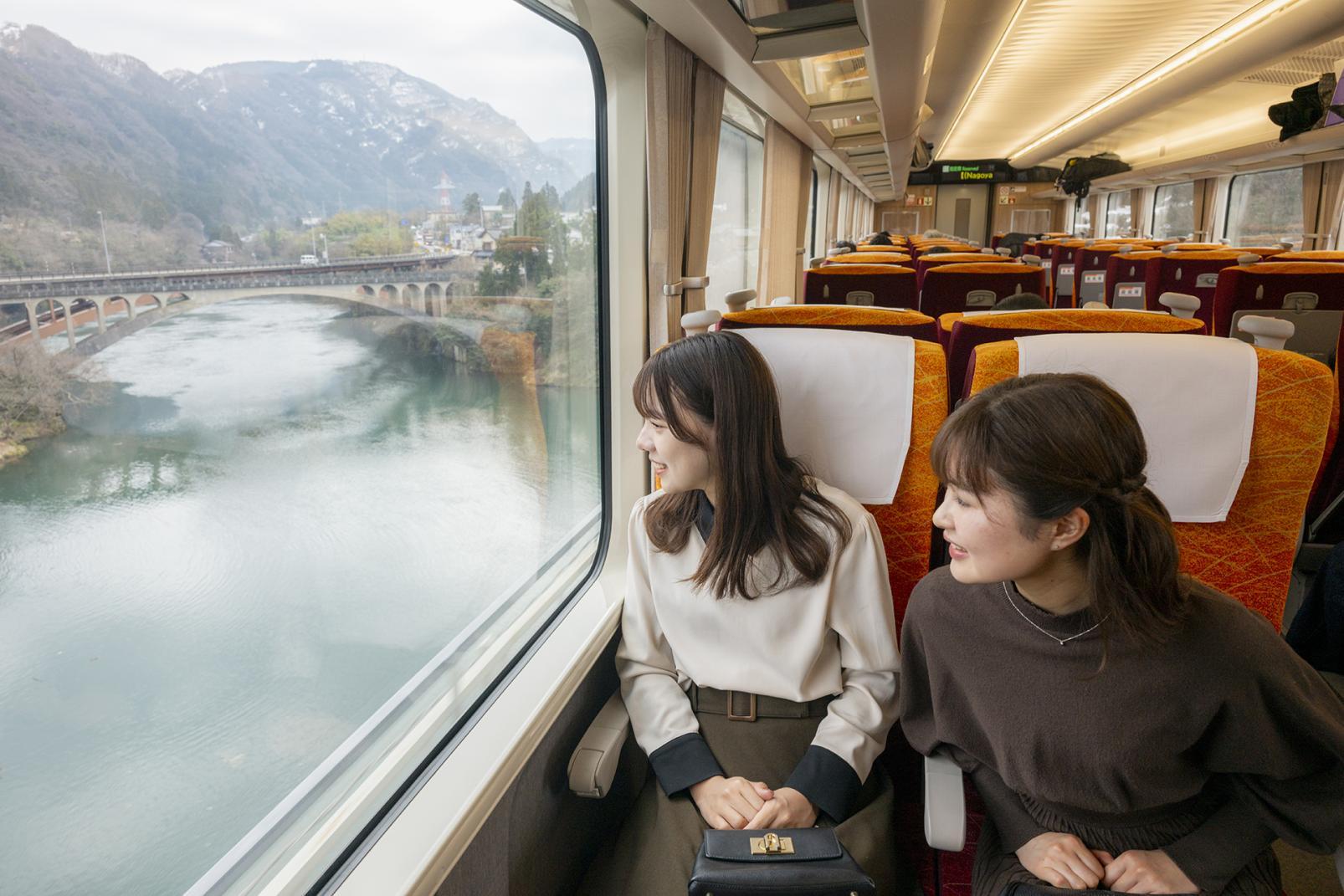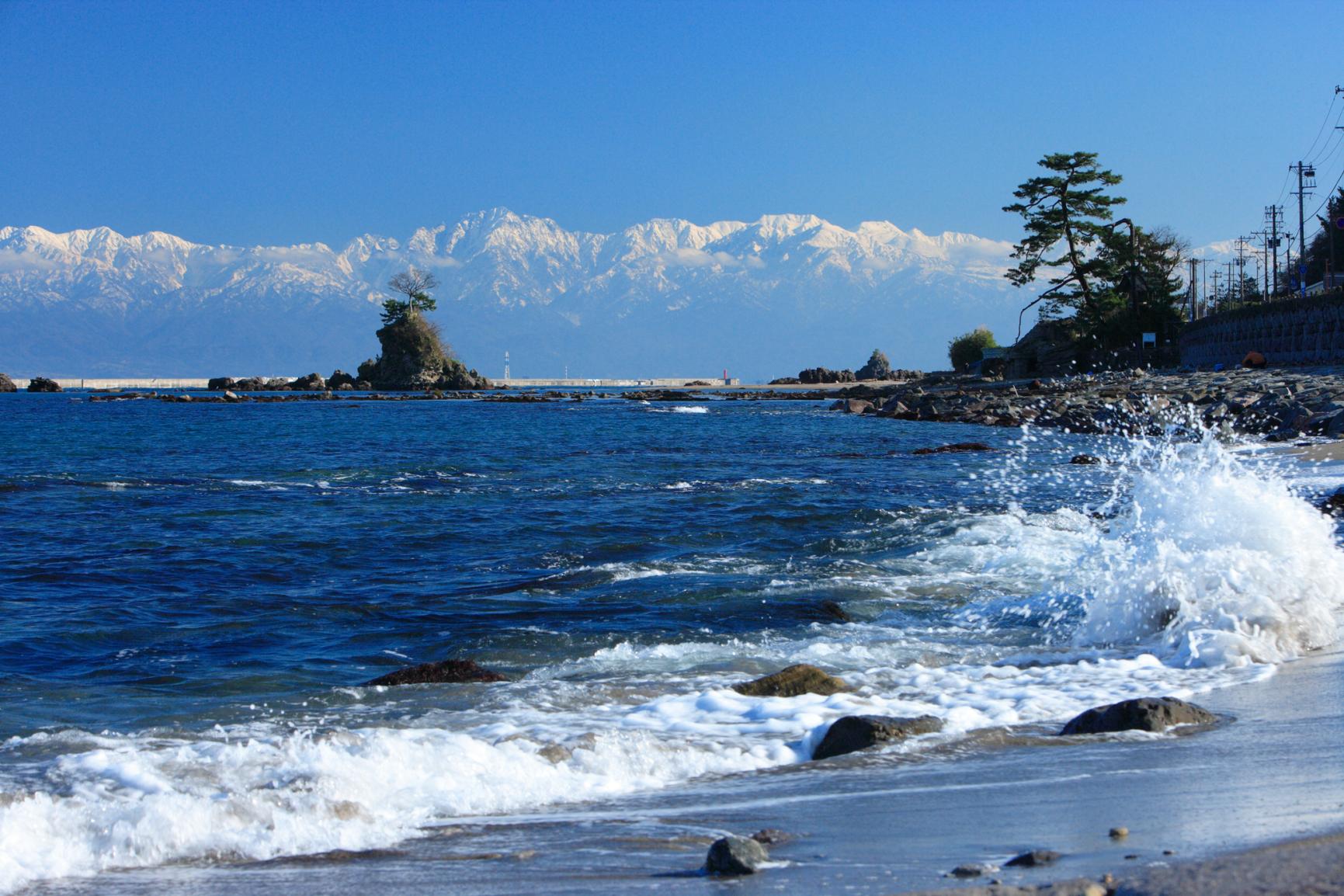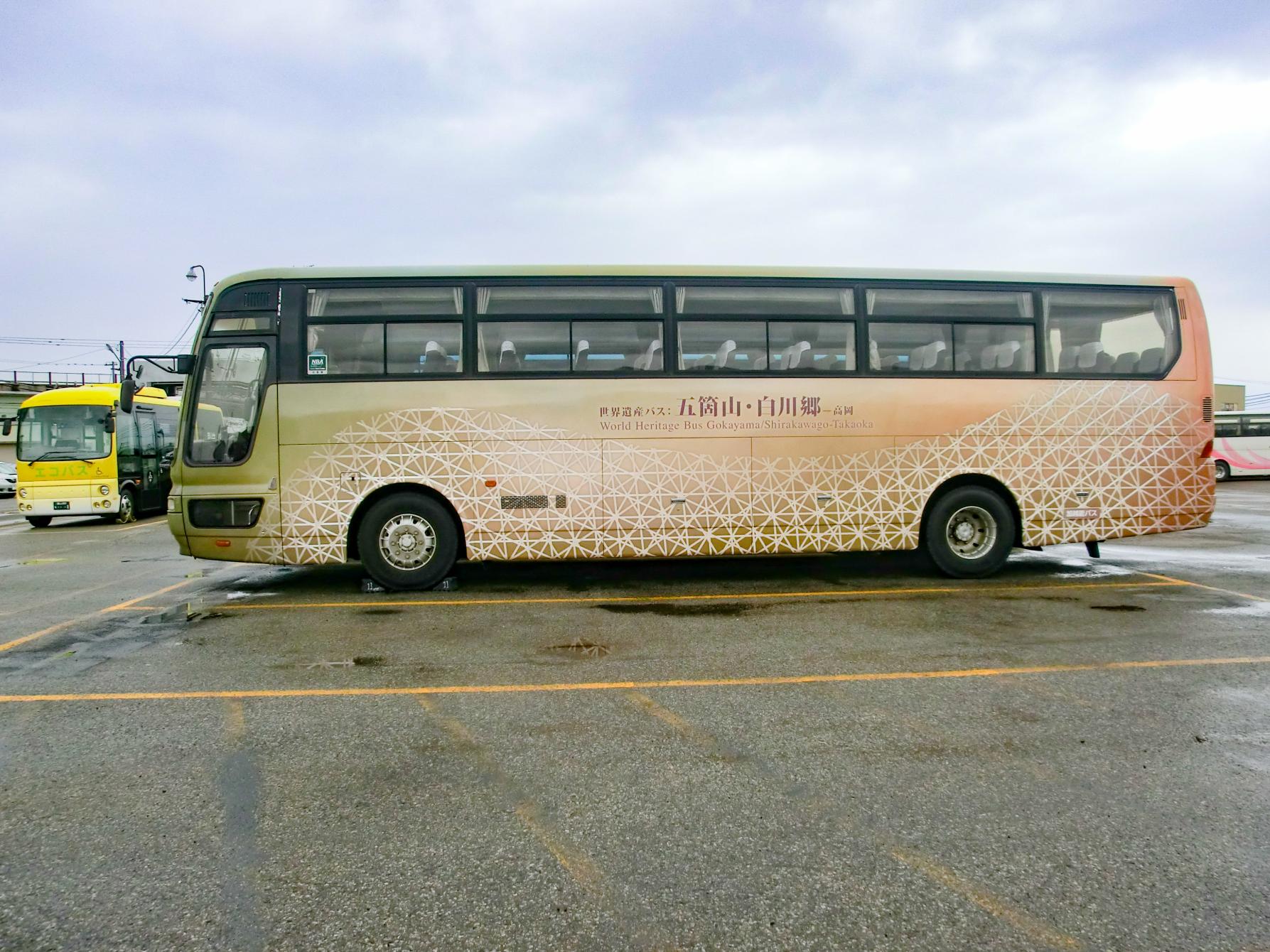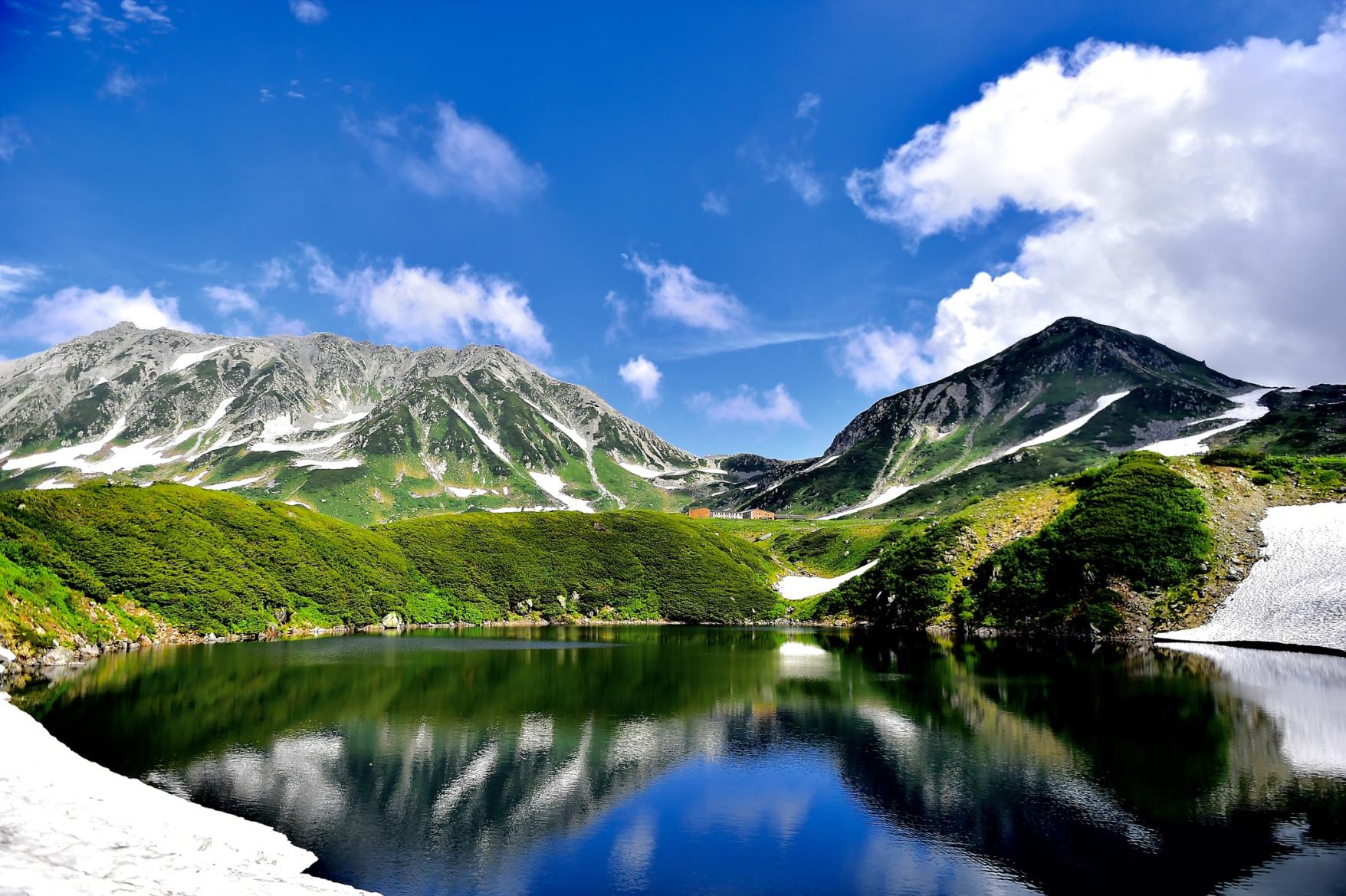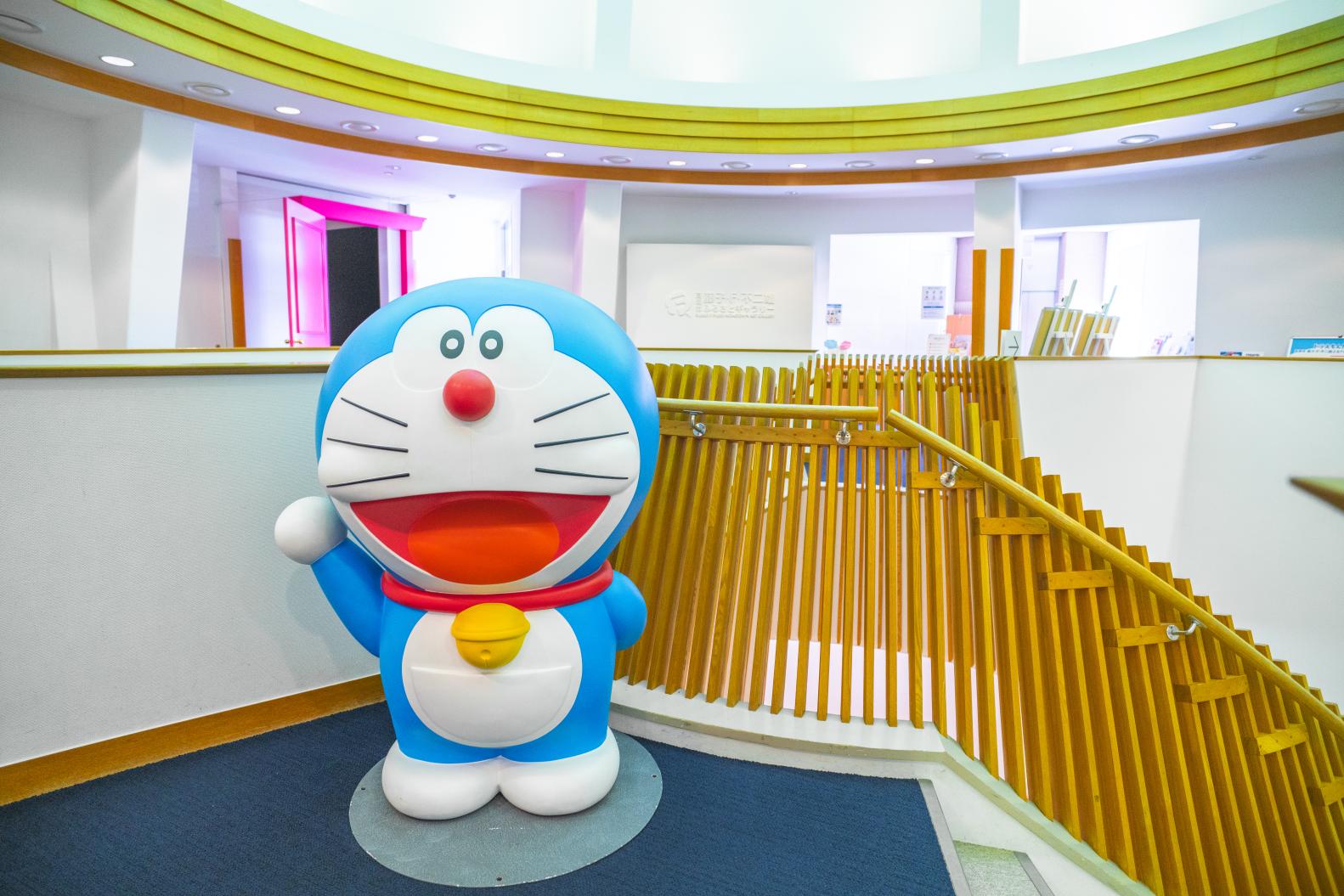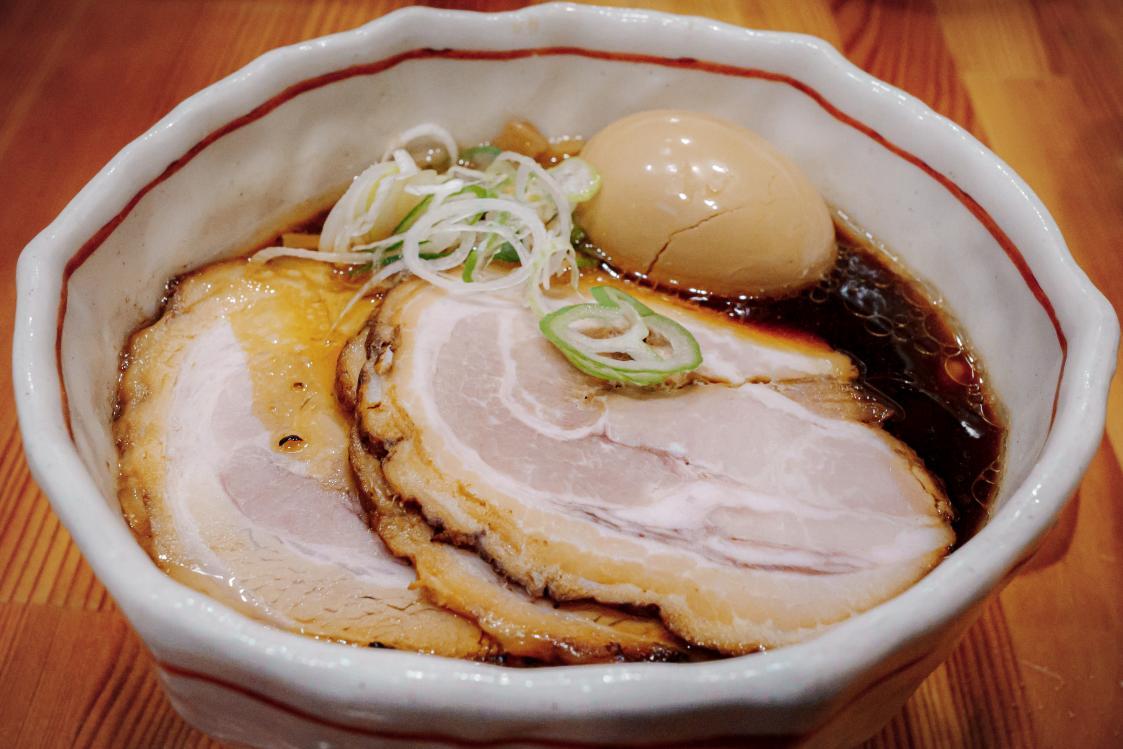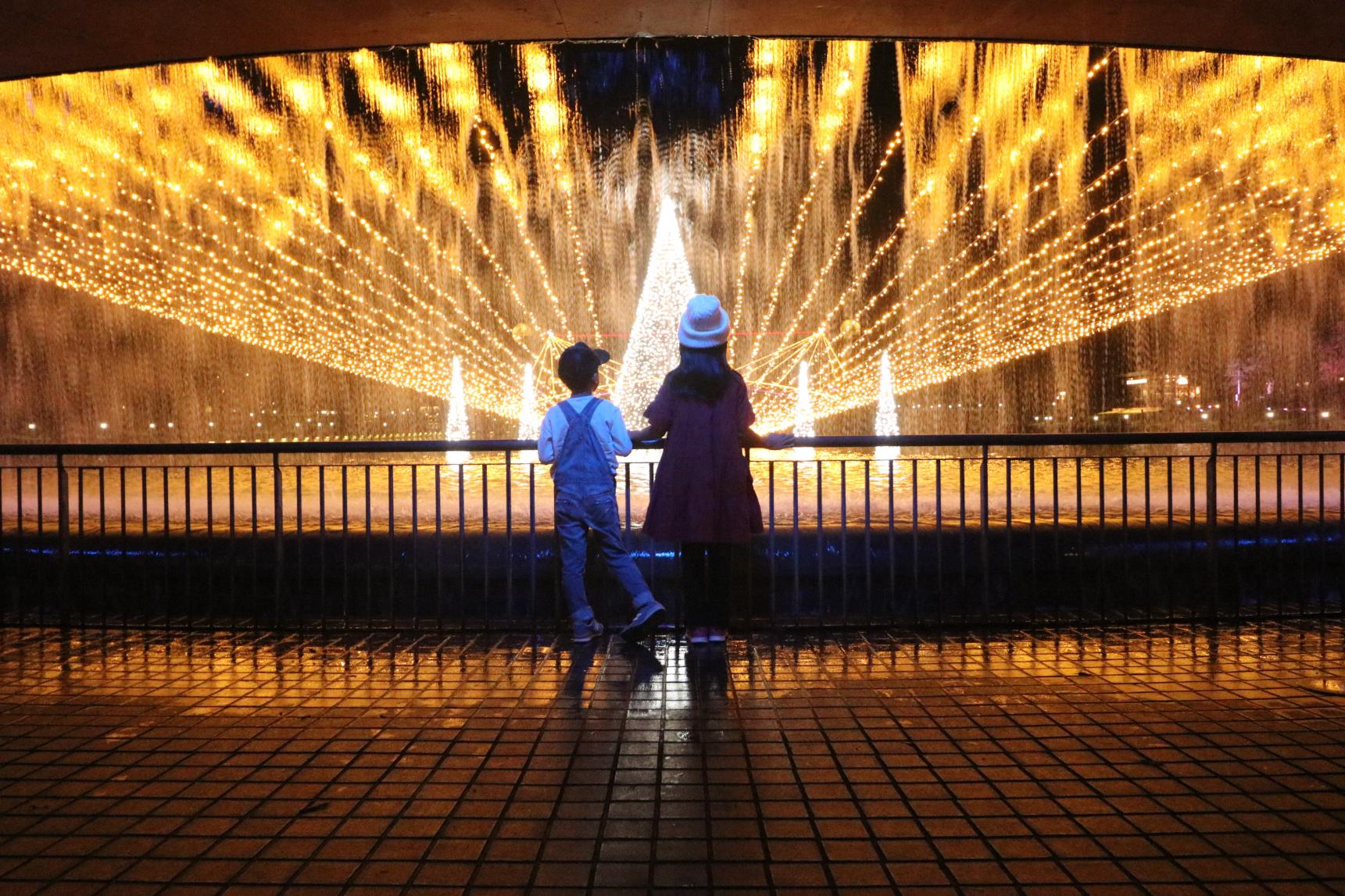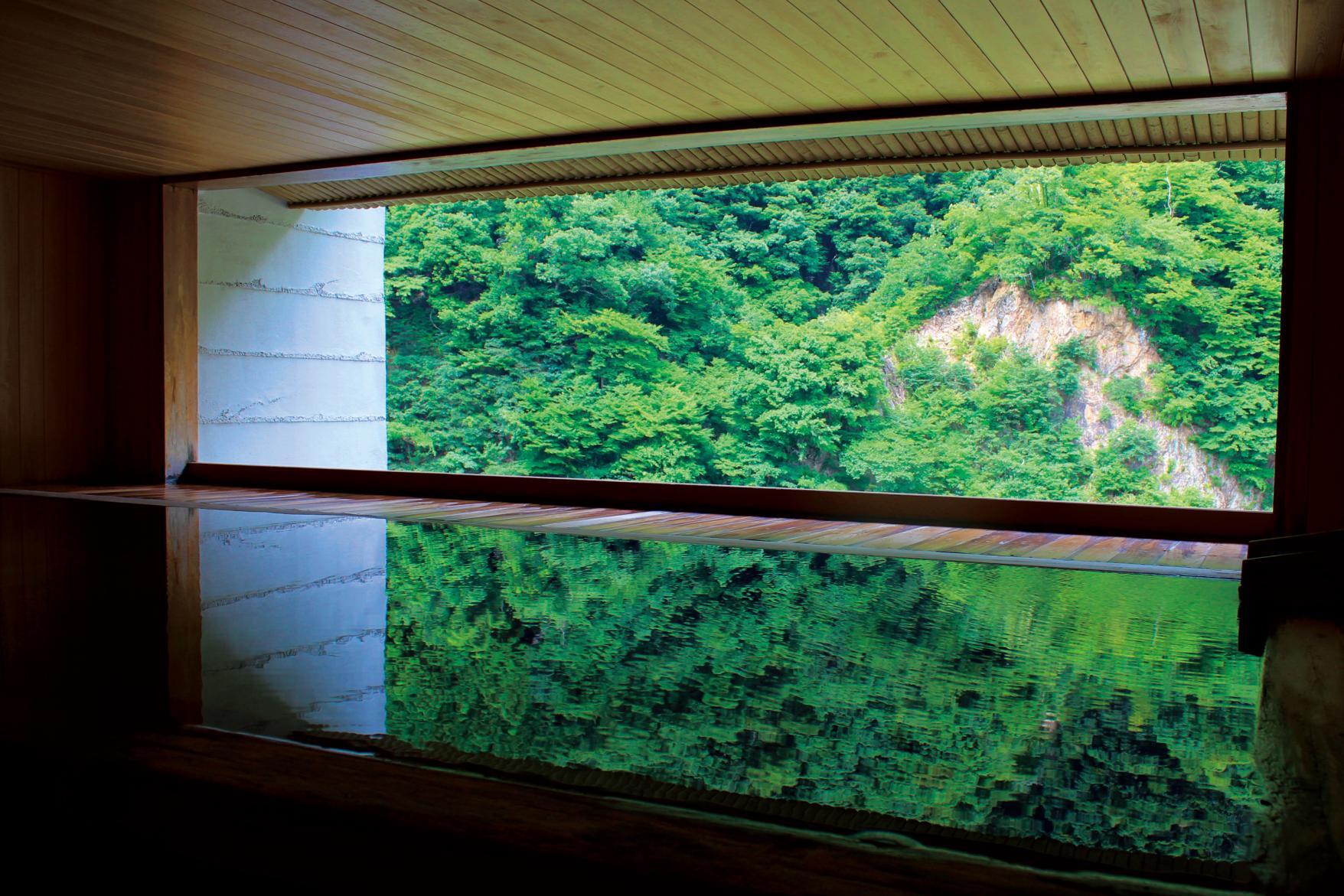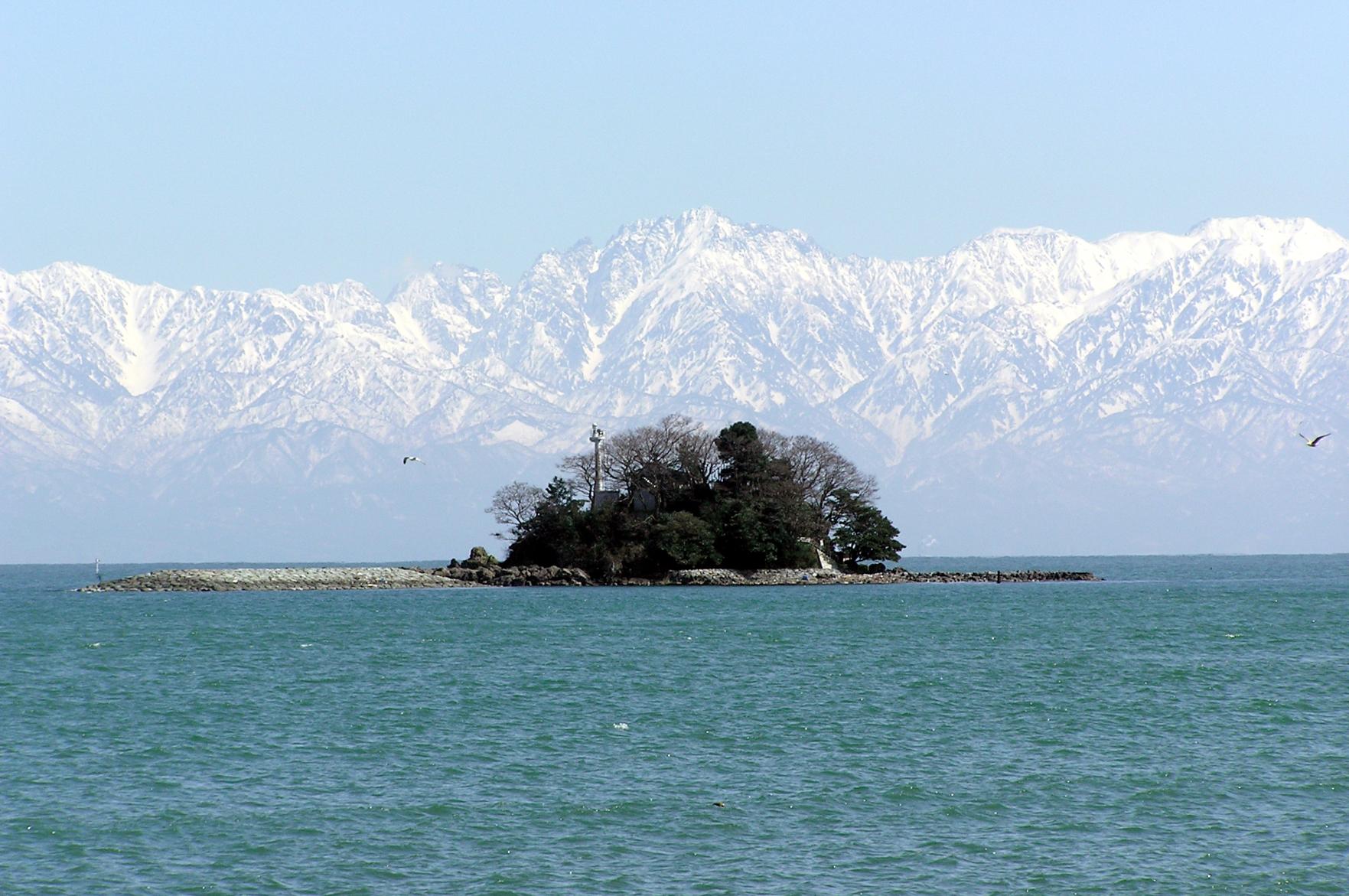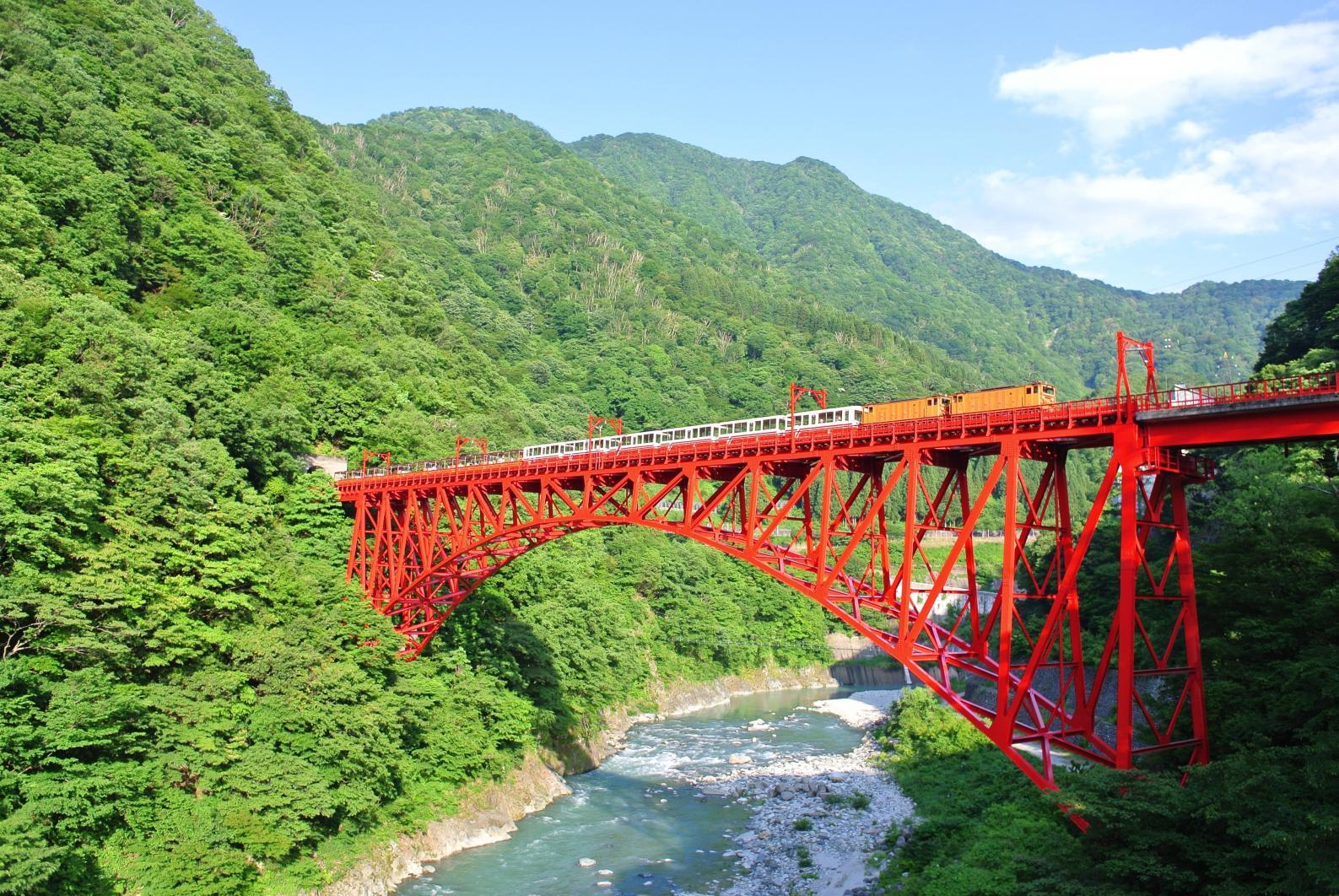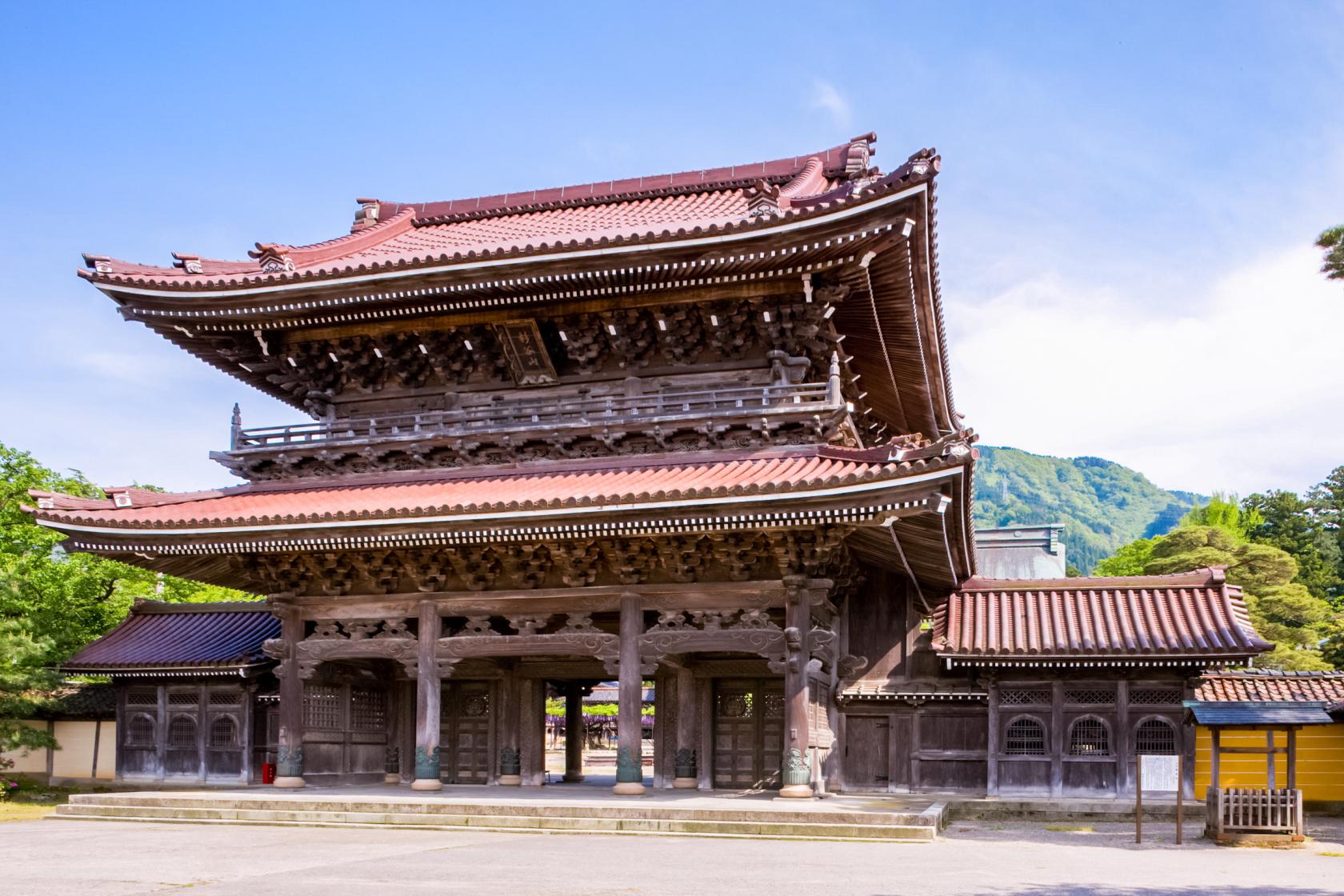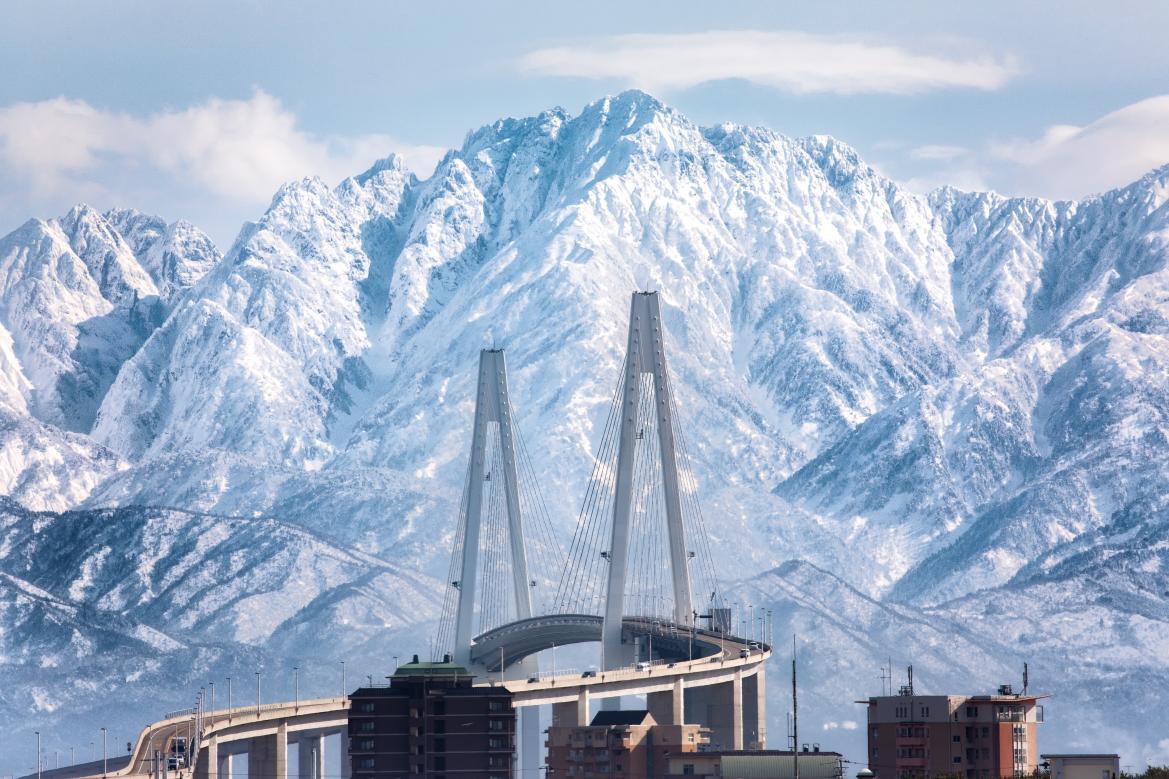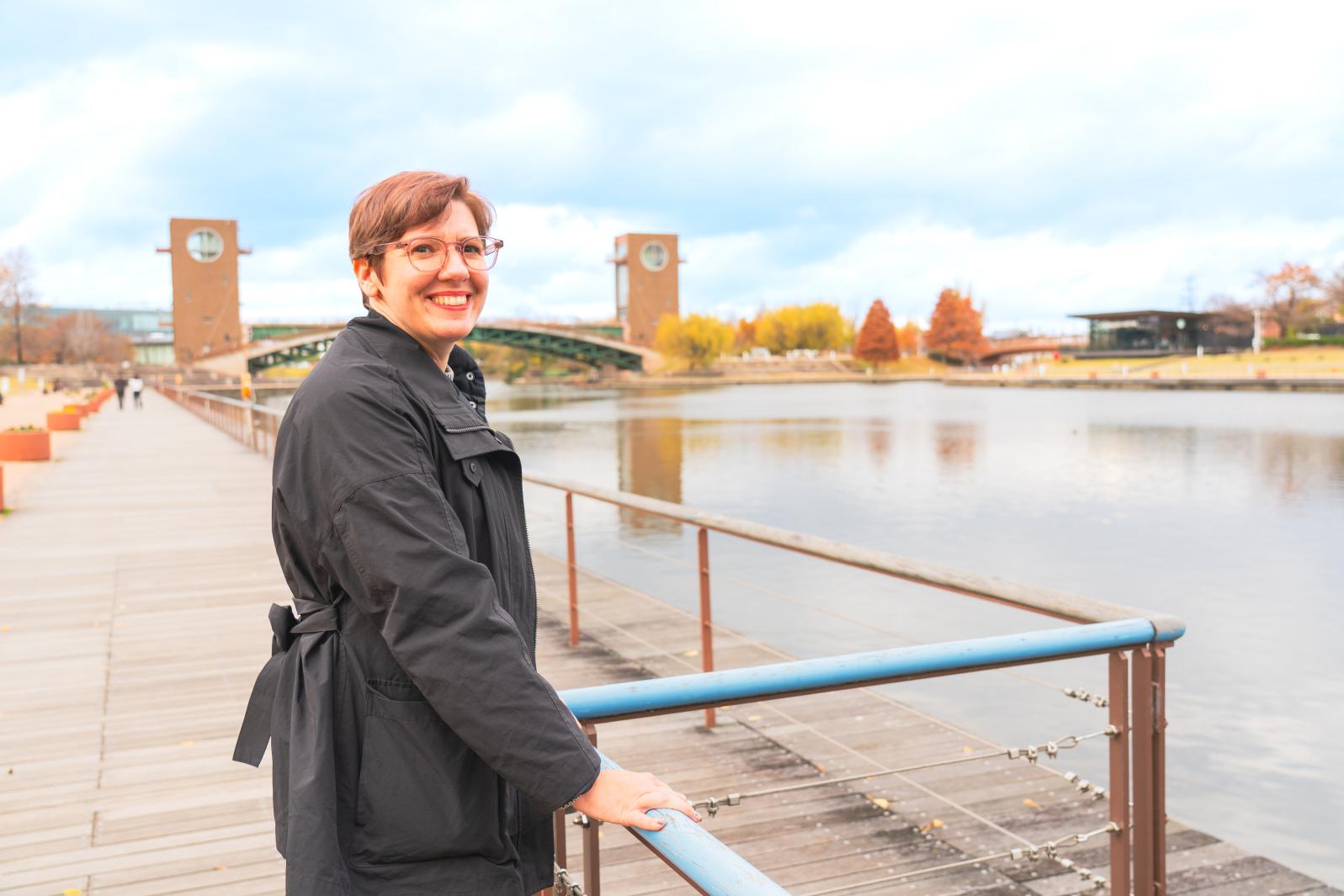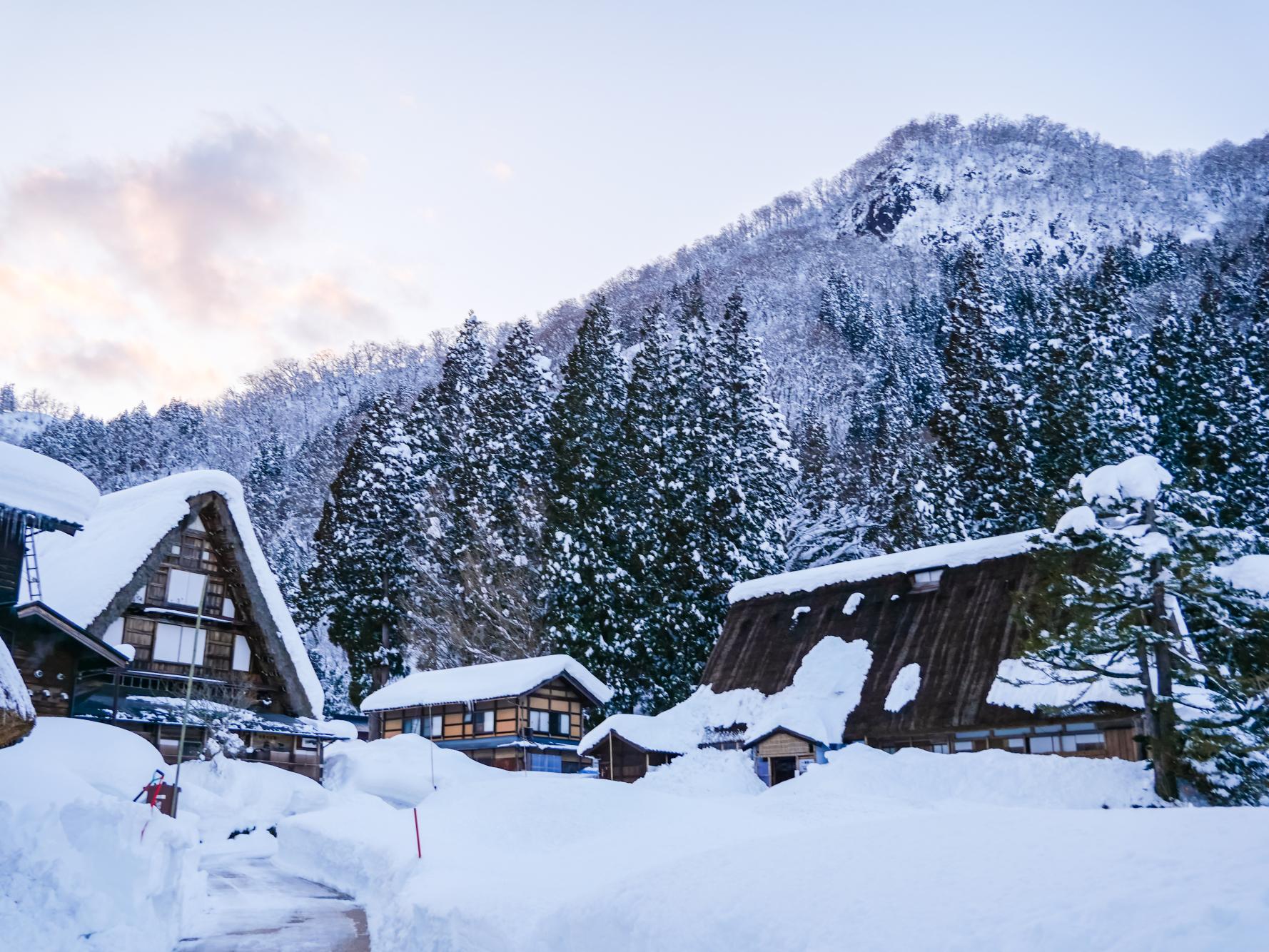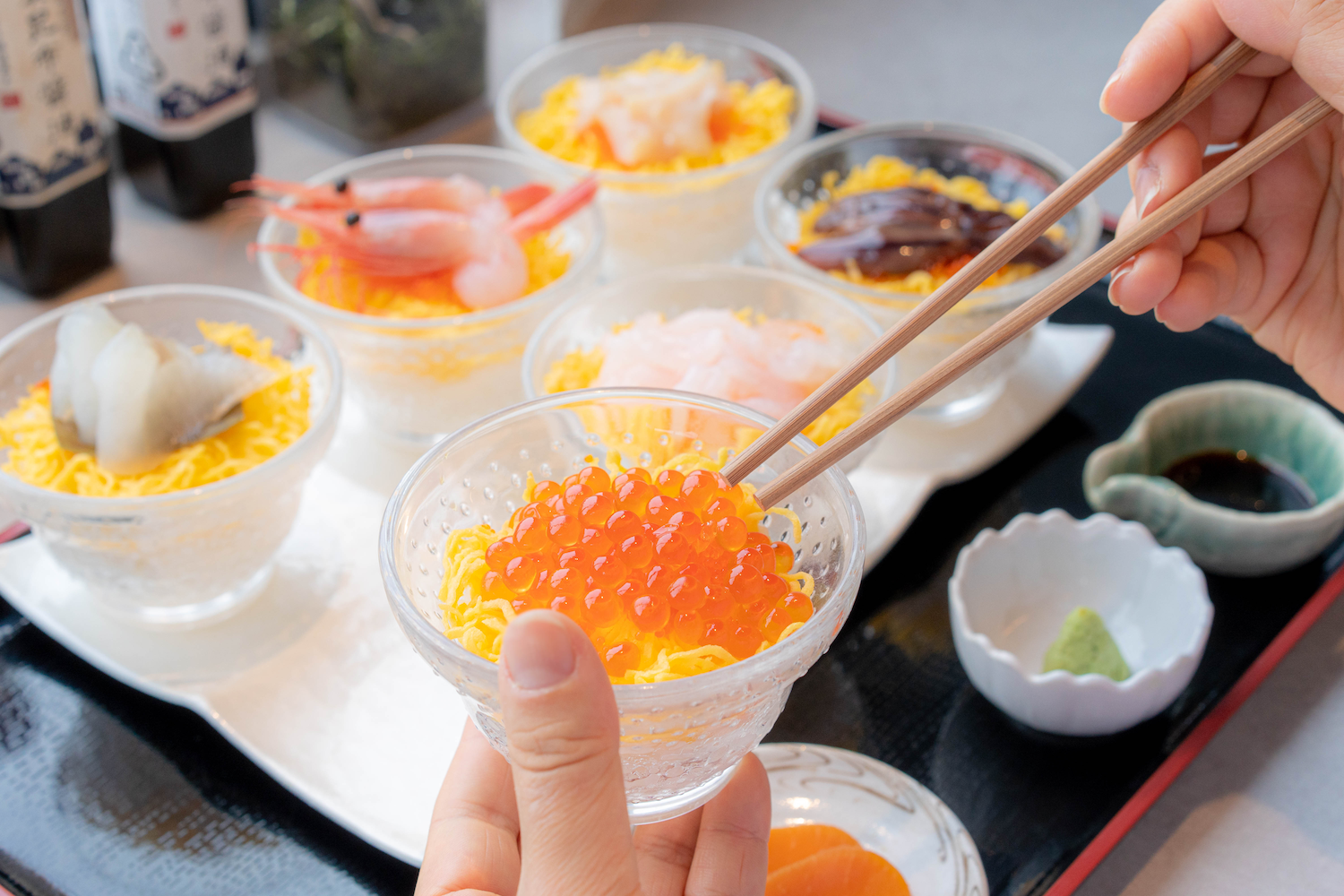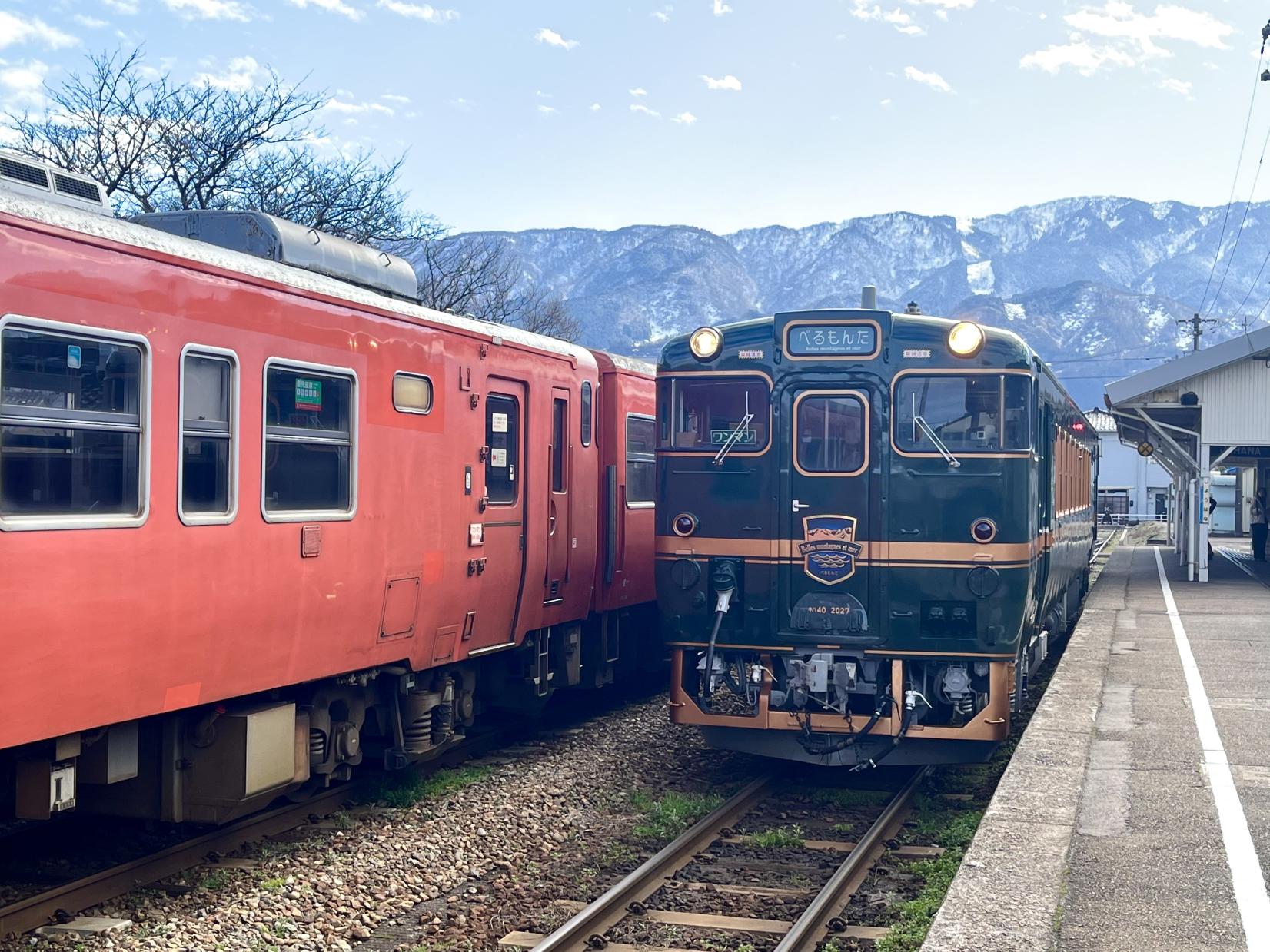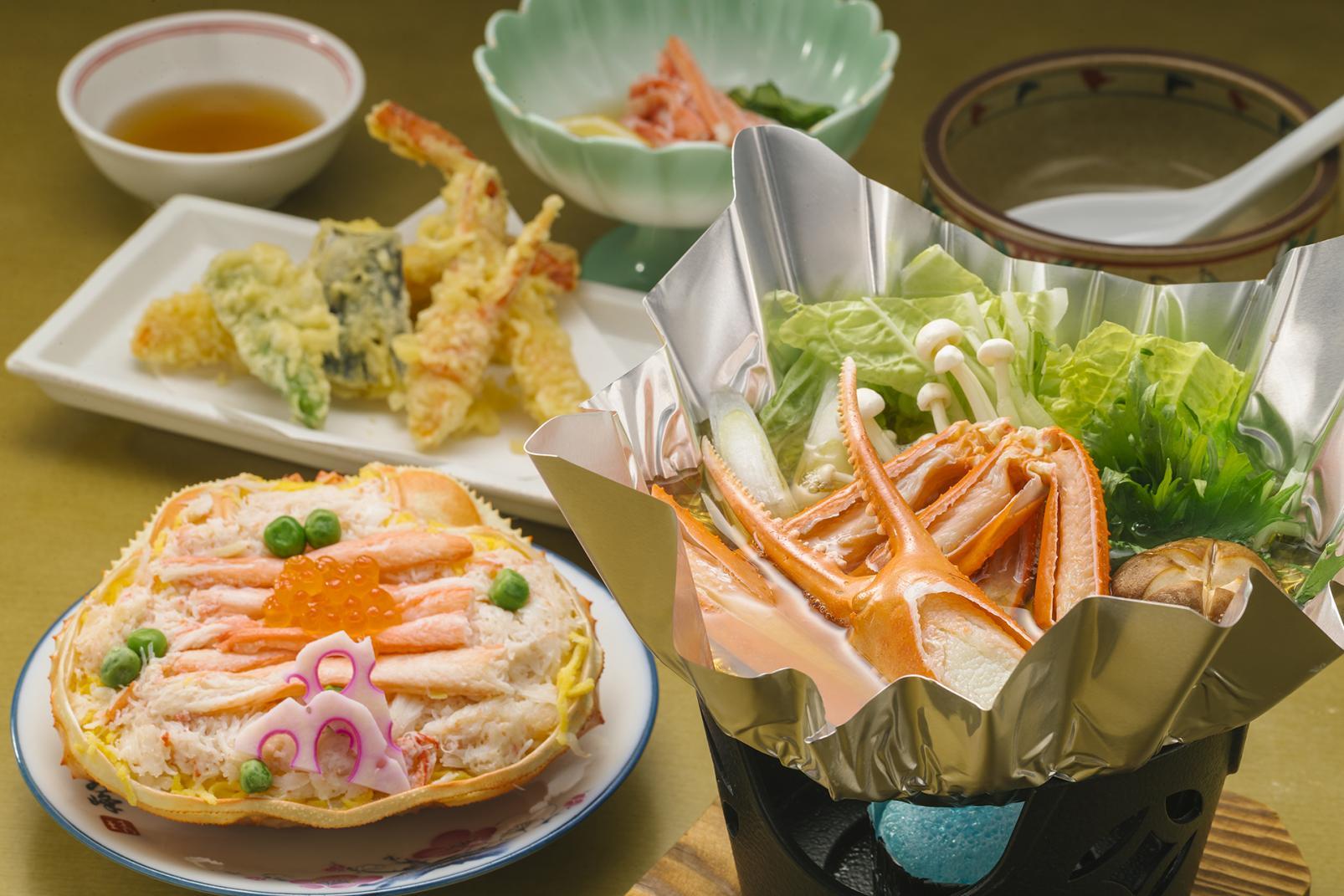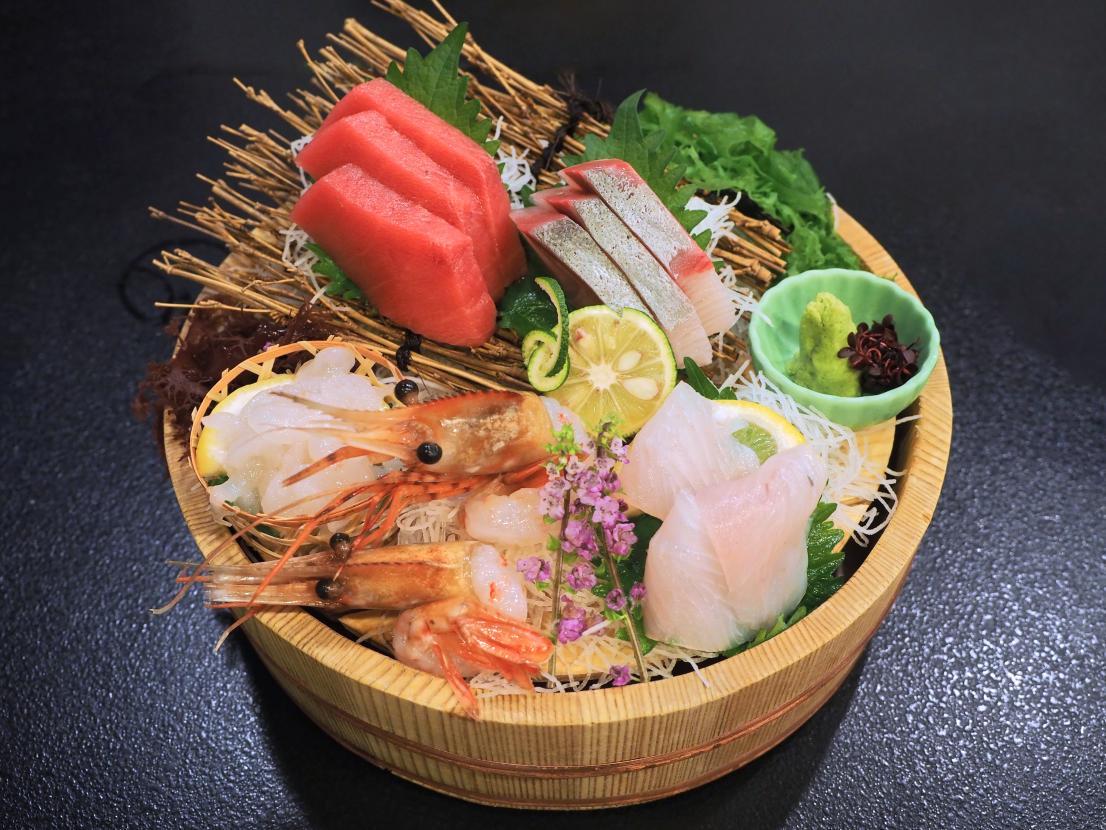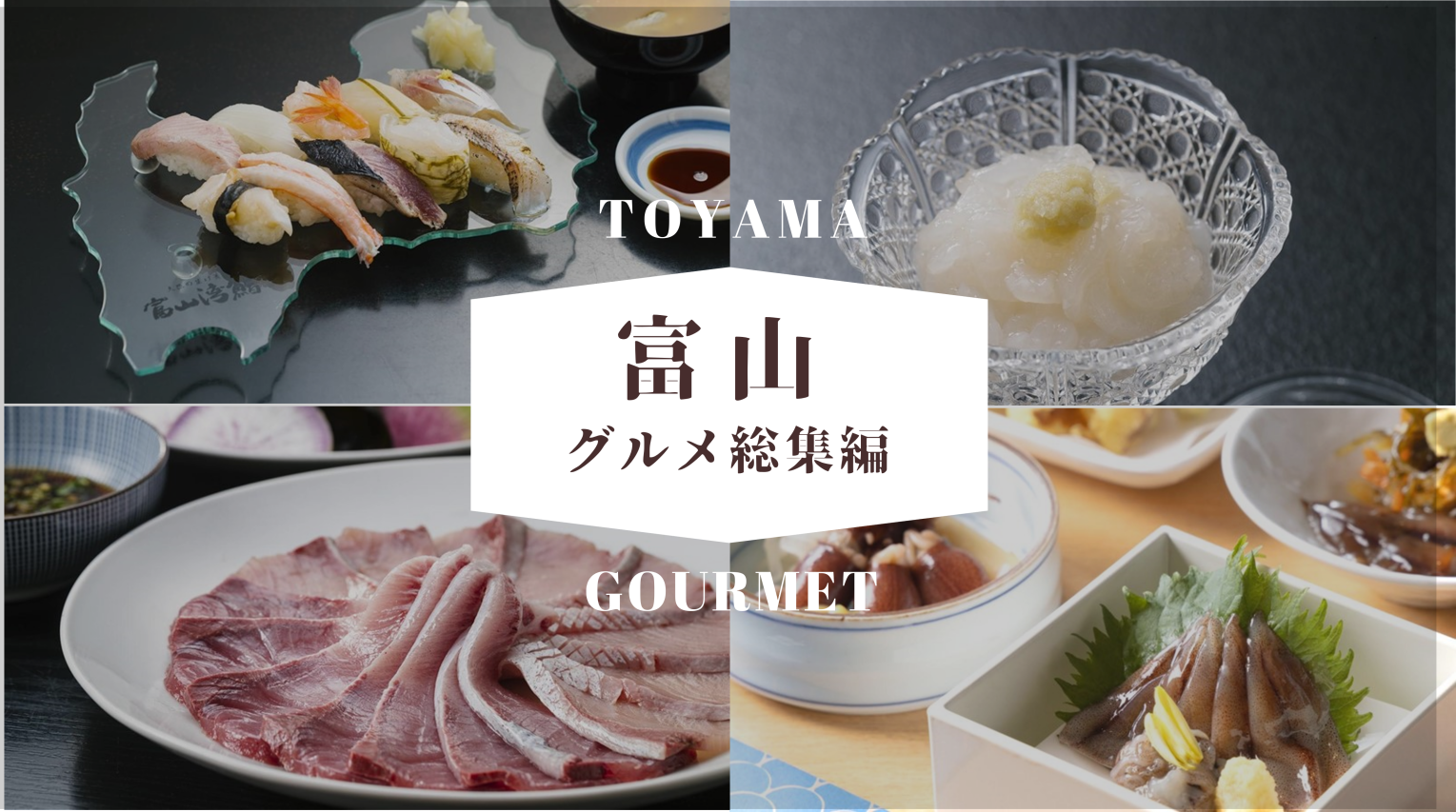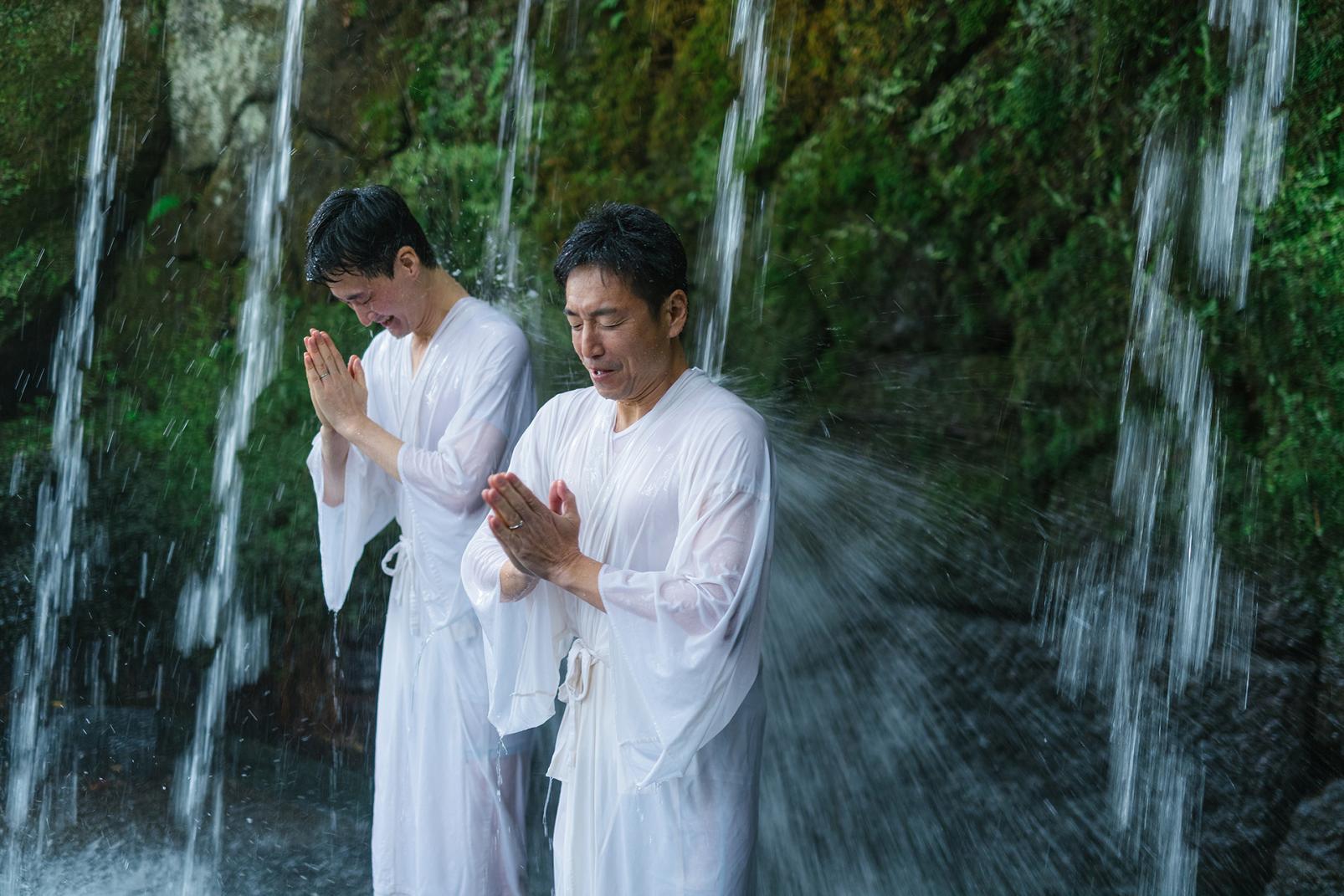
Try Out Waterfall Meditation at Oiwasan Nisseki-ji Temple and Taste Kamiichi Town’s Famous Somen Noodles and Wild Vegetable Dishes
Kamiichi Town is a peaceful town spread out at the foot of the 2,999-meter Mt. Tsurugi in the Northern Alps. In addition to being dotted with famous spots where snowmelt from the Northern Alps gushes out, there are also three areas certified as bases for forest therapy where the rich nature and fresh air will refresh you.
The Oiwa area is also home to Oiwasan Nisseki-ji Temple, the head temple of the Shingon Sect of Buddhism, which was founded by Gyoki in 725 and has been affectionately known as "Oiwa no Ofudo-san" by the local people since ancient times. The Magaibutsu Buddha stone carving in the main temple hall is a Nationally Designated Important Cultural Property, while the Fudo Myoo (Acala) statue, standing at about 6m high and 10m wide, is said to be one of the largest and most beautiful in Japan. At the Roppondaki Waterfall within the temple grounds, visitors can experience Takigyo or waterfall meditation.
Arriving at Oiwasan Nisseki-ji Temple, the Head Temple of the Shingon Sect of Buddhism
Oiwasan Nisseki-ji Temple, the head temple of the Shingon Sect of Buddhism, is located about a 10-minute drive from Kamiichi Station on the Toyama Chiho Railway.
On Hyakudanzaka, the approach to the temple, there are shops and inns that serve the famous Oiwa somen noodles, and the area gets crowded especially during the warmer seasons. However, the area also attracts visitors during the colder seasons, most notably on "Daikan" (the coldest day of the year) for ascetic training in the cold, including waterfall meditation.
First, purify your hands and mouth at the chozuya, then head to the main temple building. Offer incense, bow once, then pray.
Next, let’s tour the main temple hall.
Column
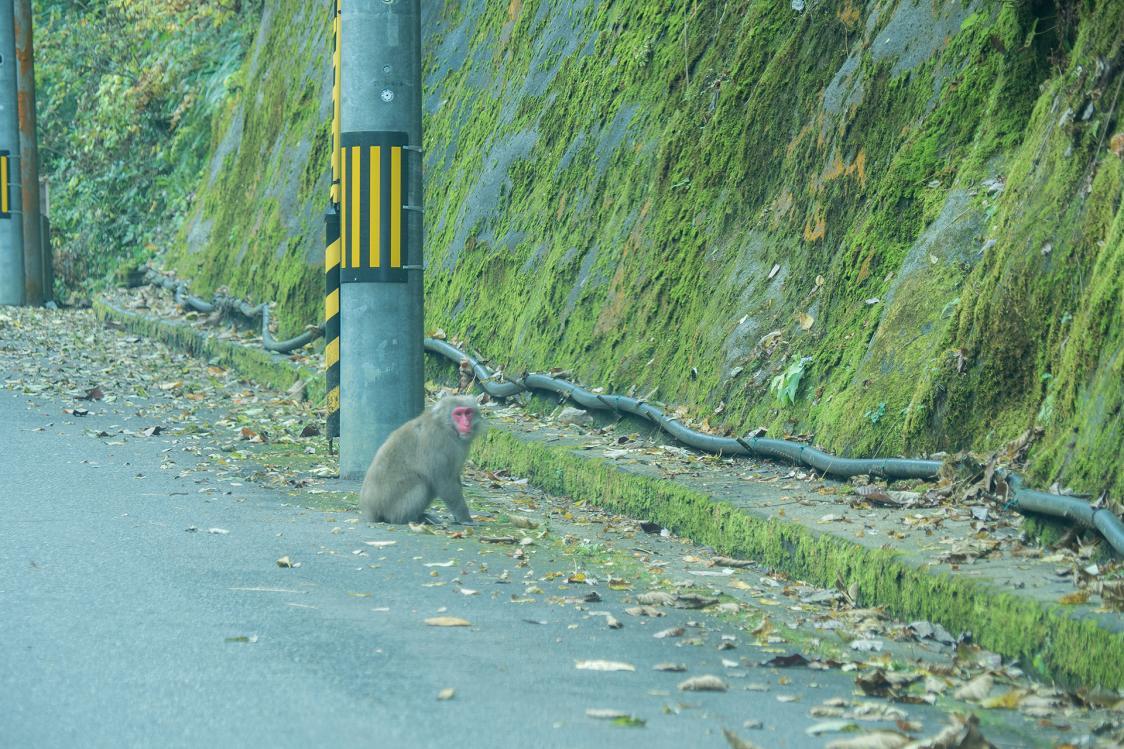
You Might Meet Wild Animals
As Oiwasan Nisseki-ji Temple is located close to nature, wild animals live nearby. As you drive to and from the temple, you may be able to spot monkeys and antelopes strolling around.
Be Impressed by the Magaibutsu Stone Carving, a Designated Nationally Important Cultural Property
When you enter the main temple hall, your attention will be drawn to the figure of Fudo Myoo (Acala) carved into a large rock. The sight of him holding a sword representing power in his right hand and a rope representing wisdom in his left is impressive, as if he were coming towards you. It is said to have been created between the late Heian period and the Kamakura period, and is considered one of the most magnificent Magaibutsu statues from this period. Even when the main hall was destroyed by fire during the Muromachi period and again in 1967, it sustained almost no damage. Goma prayers, in which an offering is thrown into a fire to pray for a deity's blessings, are held in front of the Magaibutsu on the 1st and 27th of every month and every Sunday. You can also tour Dainichi Hall, which is connected to the main temple hall by a corridor.
Register at the Temple Office for the Waterfall Meditation
If you wish to try out waterfall meditation, please register at the temple office near the main temple hall. Write down what you want to accomplish or a wish and your name on the “Gomagi” wooden prayer stick, then ask to borrow a white robe. The Gomagi will be one of the offerings thrown into the fire during the Goma prayer on Sundays. As the water is quite cold, please be careful not to let your neck and head get wet.
*Please note that there is a fee to try out waterfall meditation and to rent a white robe. Also, towels are not available.
It's Time for the Waterfall Meditation!
After changing into the white robe, the first thing to do is to purify the Mizukake Fudo statues located near Roppondaki Waterfall. Pour water on them, let them know that you are borrowing the waterfall, and pray for what you have written on the Gomagi. You can go in and out of the waterfalls as many times as you like, but once you decide on one waterfall, you can only use that one, so first decide which waterfall to use and proceed without hesitation.
At the “Junishi no Taki” (Twelve Zodiacs Waterfall), which is located below Roppondaki Waterfall, you can try out waterfall meditation without applying at the temple office.
Column
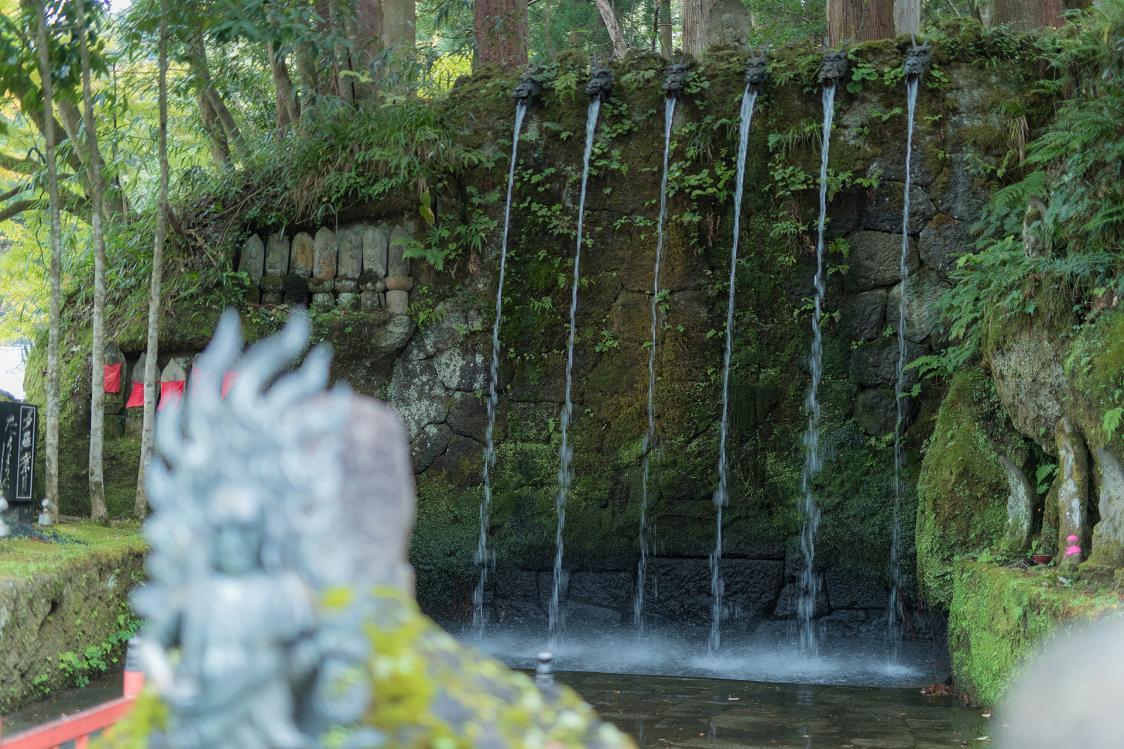
Which Roppondaki Waterfall should you choose?
The six waterfalls of Roppondaki are, from left to right, "eyes," "mouth,” "nose,” "ears,” "body,'' and “mind,” meaning that each waterfall will cleanse that part of your body. Feel free to choose any one of them.
Put Your Hands Together, Concentrate, and Let Roppondaki Waterfall Hit You
It's finally time to enter the waterfall and experience waterfall meditation. At Roppondaki Waterfall, the water flows straight down from the mouth of 5.5-meter-high dragon-head spouts, so the force is strong and the snowmelt will cool you down even in summer. The Roppondaki Waterfall was originally built to purify the mind and body and to worship Fudo Myoo. It is said that by being hit by the waterfall that flows from the mouths of the six dragon heads, you can wash away your six desires and evil passions.
Column
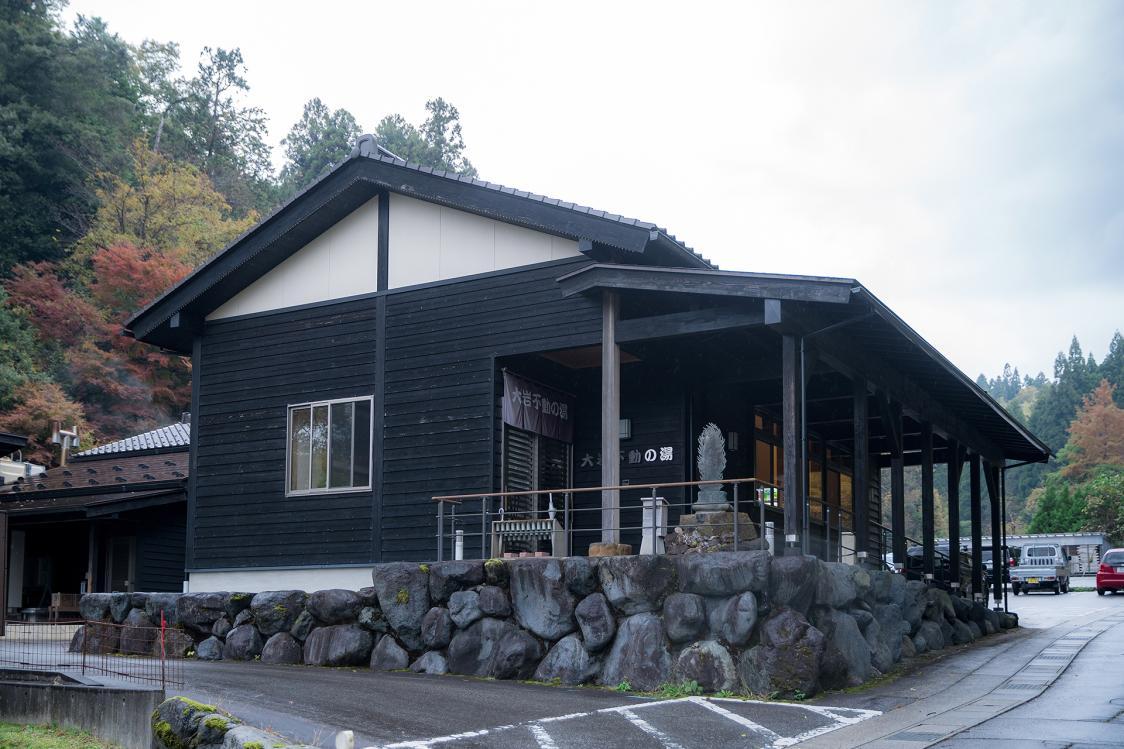
Have a Soak in the Baths of Oiwa Fudo no Yu
After your body cools down from the waterfall meditation experience, it is recommended to warm up at the nearby natural hot spring, "Oiwa Fudo no Yu." Soaking in the bath filled with water from a private hot spring source will warm you to the core and make you feel dreamy. The indoor bath has stained glass windows depicting Fudo Myoo and Roppondaki Waterfall.
Oiwa Fudo no YuThere are Many Other Attractions at Oiwasan Nisseki-ji Temple
In addition to the Magaibutsu stone carving and Roppondaki Waterfall, there are many other attractions at Oiwasan Nisseki-ji Temple.
There are six Buddha statues next to Roppondaki Waterfall, and the nearby Fujii Mizu (wisteria water) has been selected as one of Toyama's best waters. The exterior of Kannon Hall exhibits the same Japanese-style “Sangen-do” architectural style as Chusonji Temple’s Konjiki Hall, while the Dainichi Hall and the three-story pagoda also have solemn appearances. One of the pleasures of visiting Oiwasan Nisseki-ji Temple and its grounds is to enjoy the beautiful buildings and the seasonal nature. It’s perfect for a leisurely stroll.
Oiwa's Somen Noodles with a Mild Broth
Oiwa Somen is a local specialty that has been around for 70 years, and many people come to Oiwa just to eat somen noodles. It's so popular that there can be long waits everywhere in the summer.
Along Oiwasan Nisseki-ji Temple’s Hyakudanzaka slope lined with restaurants and inns, there are currently three restaurants serving somen noodles. Oiwa Somen is a beautifully arranged dish that looks like a line of threads. The noodles are aged for three years, then exposed to the cold water of Oiwa, making them firm and resistant to stretching even when soaked in soup. Each restaurant is particular about its broth and noodles, and they serve it with river fish, wild vegetable dishes, and Japanese sweets. It's fun to taste the differences between the somen dishes of each store and try to find the somen noodles you like best.
Column
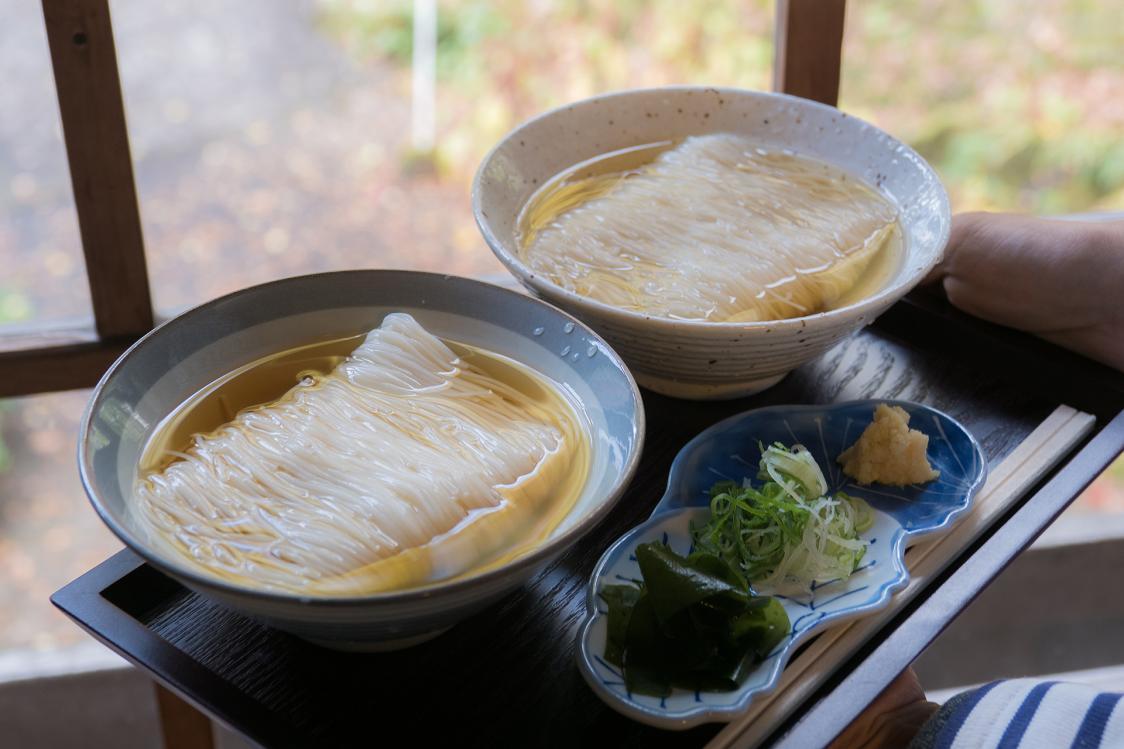
New Specialty: Oiwa Nama Somen
"Dangoya" has released "Oiwa Nama Somen," with “nama” meaning “fresh.” It was invented by the 6th-generation owner in the summer of 2020. The hand-pulled somen noodles, made using Oiwa spring water, are chewy and have a smooth texture, with the flavor and aroma of wheat standing out. They also serve a set that includes both dried and fresh noodles for you to eat and compare, so be sure to try it.
Taste Wild Vegetable Dishes Prepared with Time and Care at “Dangoya”
On the side of Hyakudanzaka is the 130-year-old Dangoya, one of three restaurants serving the famous Oiwa Somen, and which also operates as an inn. Currently, the landlady and a couple belonging to the 6th generation of the family are running the business. Popular dishes include wild vegetables grown in the nearby fields in spring. The restaurant is open from late April to the end of October.
Soak in Negative Ions at Sengankei
A hundred or so meters downstream from Oiwasan Nisseki-ji Temple’s Roppondaki Waterfall is a ravine called Sengankei. The valley stretches for 500m around the Oiwa River, which meanders through many huge rocks and boulders, creating waterfalls and basins. The towering trees shading these waters and their surroundings create a cool atmosphere, with ferns and large mosses growing thickly underfoot. It is said that the temperature is about 5 degrees lower than the area around Oiwasan Nisseki-ji Temple, and you can feel the water’s temperature through the cool air, making it a great spot to visit in summer.
Head Deeper into Sengankei, Surrounded by Deep Green
Cross the moss-covered Yatsuha Bridge and you will arrive at the Okunoin Gyoja Cave. The cave, which was opened in 1896, is a sacred space and has a solemnity different from that of Oiwasan Nisseki-ji Temple. Please be careful when walking as the ground can be slippery.
Back on the paved road, a 30-40 minute walk will take you to an old house that was used as the model for the setting of "Wolf Children,” a movie based on the original story and screenplay by Mamoru Hosoda, a native of Kamiichi Town. The scene indeed looks as if it came out of the movie, which is sure to surprise those who have seen the movie.
This time we introduced recommended spots in the Oiwa area of Kamiichi Town. Purify your mind and body with the waterfall meditation experience and enjoy the famous Oiwa Somen and wild vegetable dishes!



